Tour de France helmets: Who's wearing what?
Whether it's for style, aerodynamics, weight, comfort or the all-important safety, if you want to wear the same helmet as the pros, here's what they're wearing
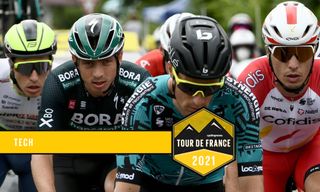
The increased safety that comes as a result of wearing a helmet is rather indisputable. Of course, the EPS foam construction is far from indestructible but, in the event of a crash, if you had the choice of your bare skull impacting the road or a helmet, you know which you'd prefer.
Such is the increase in protection, helmets are mandatory at UCI sanctioned events, meaning all riders at the Tour de France are required to wear one. But long gone are the days of leather 'hairnet' helmets; today's helmets are required to pass stringent safety tests.
That said, some go further in the name of safety than others. Many brands integrate a slip liner from Swedish company, MIPS (Multidirectional Impact Protection System), or their own rotational impact protection such as POC's SPIN (Shearing Pad INside), which are proven to reduce concussion in angled or rotational impacts.
Of course, as with any tech, the pros riding the Tour de France are given the very best available, ones that combine aerodynamics, ventilation, weight and safety. Read on for a rundown of the helmet brands in this year's race, and who's wearing them.
Alternatively, check out our buyer's guide to the best road bike helmets , or if you wish to save money, our cheap bike helmets guide is for you.

Worn by: Cofidis, Lotto Soudal, Qhubeka Nexthash, Arkea Samsic
Ekoi is the most commonly found helmet manufacturer in this year's Tour de France, supporting no less than four teams representing the French brand.
The AR14 is the one that most riders have opted for, with its aerodynamic design paired with small vents up-front for breathability. This was the helmet worn by Caleb Ewan in that stage 3 crash, as well as by stage 4's breakaway nearly man, Brent van Moer of Lotto Soudal.
However, others have been seen using the brand's Gara, as well as the Legende, which replicates the retro hairnet style with modern and safe materials.
For time trials, teams turned to the brand's TTRB Chrono helmet.
Go to Ekoi Racing
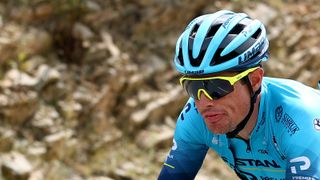

Limar
Worn by: Astana Premier Tech
Get The Leadout Newsletter
The latest race content, interviews, features, reviews and expert buying guides, direct to your inbox!
Limar makes a range of helmets for road, mountain, time trials and even a full-face helmet for downhill mountain bikes. All of the brand's helmets start with the word 'Air'. You've got the lightweight and breathable Air Pro, the aero Air Speed, and the time trial Air King helmet.
- Limar Air Speed helmet review
- Limar Air Pro helmet review
It's the lightweight Air Pro that the majority of the Astana Team have been using for their Tour de France helmets this year.
Go to Limar

Rudy Project
Worn by: Bahrain Victorious
The likes of Jack Haig and Wout Poels have Rudy Project to thank for their helmets at this year's race. Haig especially, after crashing out on Stage 3.
The brand makes helmets for all sorts of cycling disciplines, but riders have been using the brand's Spectrum almost exclusively, a helmet that blends aerodynamic shaping and large ventilation ports.
For the time trials, that switched out for the Rudy Project The Wing helmet , which we gave five stars in our recent review.
Go to Rudy Project

Specialized
Worn by: Bora-Hansgrohe, Deceuninck-QuickStep
Within the Specialized helmet range, riders from Deceuninck Quickstep and Bora Hansgrohe have the choice of the Evade, which features in our guide to the best aero helmets , and the lighter weight, more breathable Prevail II Vent.
Both helmets integrate the MIPS slip liner, as well as ANGi; a sensor that calls home in case of an accident (although they probably don't have it switched on during racing).
For time trials, they switched to the simply named S-Works TT.
Go to Specialized
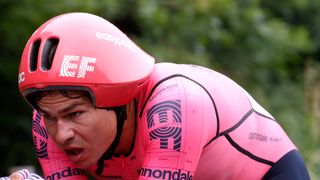
Worn by: EF-Education Nippo
Easily the most stand-out model in the POC range is the Tempor time trial helmet, pictured above, which has been around since 2012 but takes a wild approach to smoothing airflow past the rider's shoulders.
On the road stages, riders are mostly using the Ventral, or the Ventral Air. Both of which come with POC's own rotational impact protection, called SPIN, to help protect its riders in the event of a crash.
Go to POC Sports
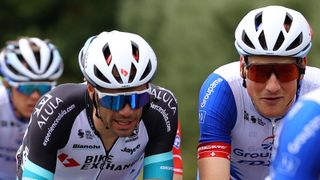
Worn by: Groupama-FDJ, Team BikeExchange, TotalEnergies
Giro is a common sight in any Tour de France, and this year, three teams are wearing the brand's helmets. Well, three and two-halves actually, because in addition to the Bike Exchange, TotalEnergies and Groupama FDJ teams, Giro has also supplied its Aerohead time trial helmets to team B&B Hotels p/b KTM and Trek Segafredo, since their sponsors - Bollé and Bontrager, respectively - don't make one.
- Giro Aether MIPS review
Those who wear Giro on the road have quite the choice in front of them. There's the flyweight Aether, all-rounder Helios, all-rounder Synthe and the dedicated-aero Vanquish. But that's clearly not enough, because many riders are using the same aero helmet that has been doing the rounds in the peloton since Spring, which Giro is yet to officially unveil.
All of which integrate MIPS, should a rider need to absorb some rotational impacts in the event of a crash.
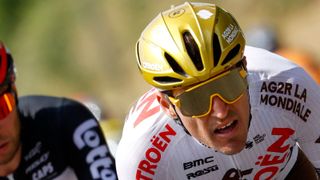
Worn by: AG2R La Mondiale, Israel Start-Up Nation
The likes of Chris Froome and Greg Van Avermaet are sponsored by HJC, a well-renowned Korean manufacturer of motorcycle helmets that has recently entered the cycling market. Most of the team have been using the IBEX 2.0, but for maximum aerodynamics, riders have been switching to the Furion 2.0, and on time trial days, riders switch to the Adwatt.
Go to HJC Sports
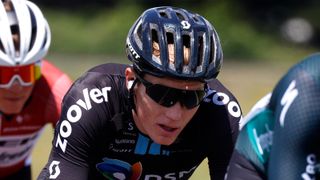
Scott
Worn by: Team DSM
Team DSM's bikes and components come from Scott Sports, and they even provide shoes for some riders, so it's perhaps unsurprising to see that they also supply the team with its range of helmets.
We gave the brand's aero helmet four stars in our Scott Cadence Plus review , and the team also has access to the Centric Plus, and on time trial days, the team uses the Scott Split Plus. All of which utilise MIPS for increased protection in the event of a crash.
Go to Scott Sports

Worn by: Alpecin-Fenix, Movistar Team
- Abus Airbreaker helmet review
Riders from Movistar and Alpecin-Fenix are given the choice of four helmets from Abus. For maximum ventilation there's the Airbreaker, for speed there's the Gamechanger, for a mixture of the two there's the Stormchaser, and for time trials riders use the Gamechanger TT. Except for Van der Poel, who naughtily switched out for a Lazer Volante at the last minute.
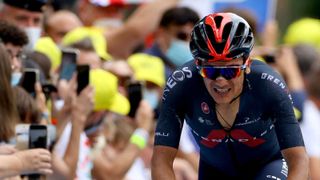
Kask
Worn by: Ineos Grenadiers
Dave Brailsford's Ineos Grenadiers team (and its former guises of Team Ineos and Team Sky) have been sponsored by Kask since the team's inception.
The team has been wearing the same Kask Protone helmet for seven years now, meaning Carapaz and Thomas are is still rocking the same lid that Froome used when he crashed out on the cobbles in 2014. That said, some riders have been sporting the strangely-named Wasabi aero helmet launched early this year.
Against the clock, riders have two choices - the short-tail Bambino, or the slightly longer Bambino Pro.
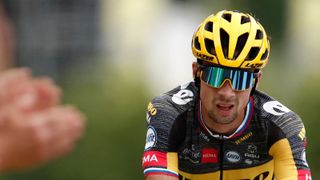
Worn by: Team Jumbo-Visma
By the calculations of the Virginia Tech Lab , Jumbo Visma riders are at the lowest risk of concussion in the event of a crash, as the Lazer G1 (Known as the Lazer Genesis in Europe) is the safest road helmet they've ever tested. The teams also have the aero Lazer Bullet at their disposal, but riders have been using the better-ventilated G1 for the most part - cooler heads prevail, and all that.
They've seen their fair share of incidents so far, too. Such as Tony Martin being taken out by an over-enthusiastic spectator on stage 1 - a crash in which his head impacted the ground hard.
Go to Lazer

Worn by: Trek-Segafredo
Bontrager claimed it had the biggest change in cycling for 30 years when it launched its range of WaveCel helmets, claiming up to 48x better protection against concussion thanks to the collapsible cellular structure inside the helmet.
Some Trek Segafredo riders have foregone the opportunity to use the Bontrager XXX WaveCel helmet because it gets rather hot, so in its place, they've been using the Velocis MIPS.
However, in the absence of a time trial specific helmet from Bontrager, the team are using rebranded Aerohead TT helmets from Giro.
Go to Trek Bikes

Worn by: UAE-Team Emirates
GC favourite Tadej Pogačar and his UAE Team Emirates team have a choice of three road helmets and two time trial helmets from Met.
On the road, there's the lightweight Trenta 3K, the all-rounder Rivale, and the newest addition to the lineup, the aero Manta. In time trials, most riders opted for the Drone Wide-body, but there's also the short-tail Codatronca.
As the current leader of the white-jersey young rider classification, Pogačar has been sporting a white version, while the rest of the team are wearing black and red.
Go to MET Helmets

Worn by: Intermarché-Wanty-Gobert Matériaux
If there are any helmet brands in this list that you've never heard of, it's the sponsor of the Intermarché - Wanty - Gobert Matériaux team, Force.
The Czech company is supplying the team with two helmets to choose from, the Orca aero helmet or the more breathable Lynx.
Time trials see the riders switch to the Globe, although Louis Meintjes sneakily used an unbranded Kask Bambino.
Go to Force
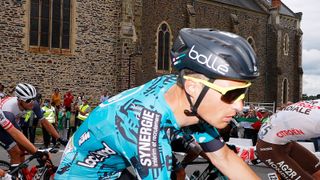
Bollé
Worn by: B&B Hotels p/b KTM
Last but not least on this list, B&B Hotels P/B KTM have been wearing road helmets from Bollé. All riders have used the brand's Furo MIPS, but not unlike Trek Segafredo, with the brand's absence of a time trial helmet, the team switched to the Giro Aerohead TT for the stage 5 time trial.
Go to Bollé Helmets

Thank you for reading 5 articles in the past 30 days*
Join now for unlimited access
Enjoy your first month for just £1 / $1 / €1
*Read any 5 articles for free in each 30-day period, this automatically resets
After your trial you will be billed £4.99 $7.99 €5.99 per month, cancel anytime. Or sign up for one year for just £49 $79 €59

Try your first month for just £1 / $1 / €1

As the Tech Editor here at Cyclingnews, Josh leads on content relating to all-things tech, including bikes, kit and components in order to cover product launches and curate our world-class buying guides, reviews and deals. Alongside this, his love for WorldTour racing and eagle eyes mean he's often breaking tech stories from the pro peloton too.
On the bike, 32-year-old Josh has been riding and racing since his early teens. He started out racing cross country when 26-inch wheels and triple chainsets were still mainstream, but he found favour in road racing in his early 20s and has never looked back. He's always training for the next big event and is keen to get his hands on the newest tech to help. He enjoys a good long ride on road or gravel, but he's most alive when he's elbow-to-elbow in a local criterium.
New Time XPro SL becomes the priciest pedal ever as brand overhauls range
Trek takes the fight to Garmin with new CarBack Radar rear light
What is the Cima Coppi? The story of the Giro d'Italia's highest climb
Most Popular
2023 Tour de France Helmets Brands and Models Guide
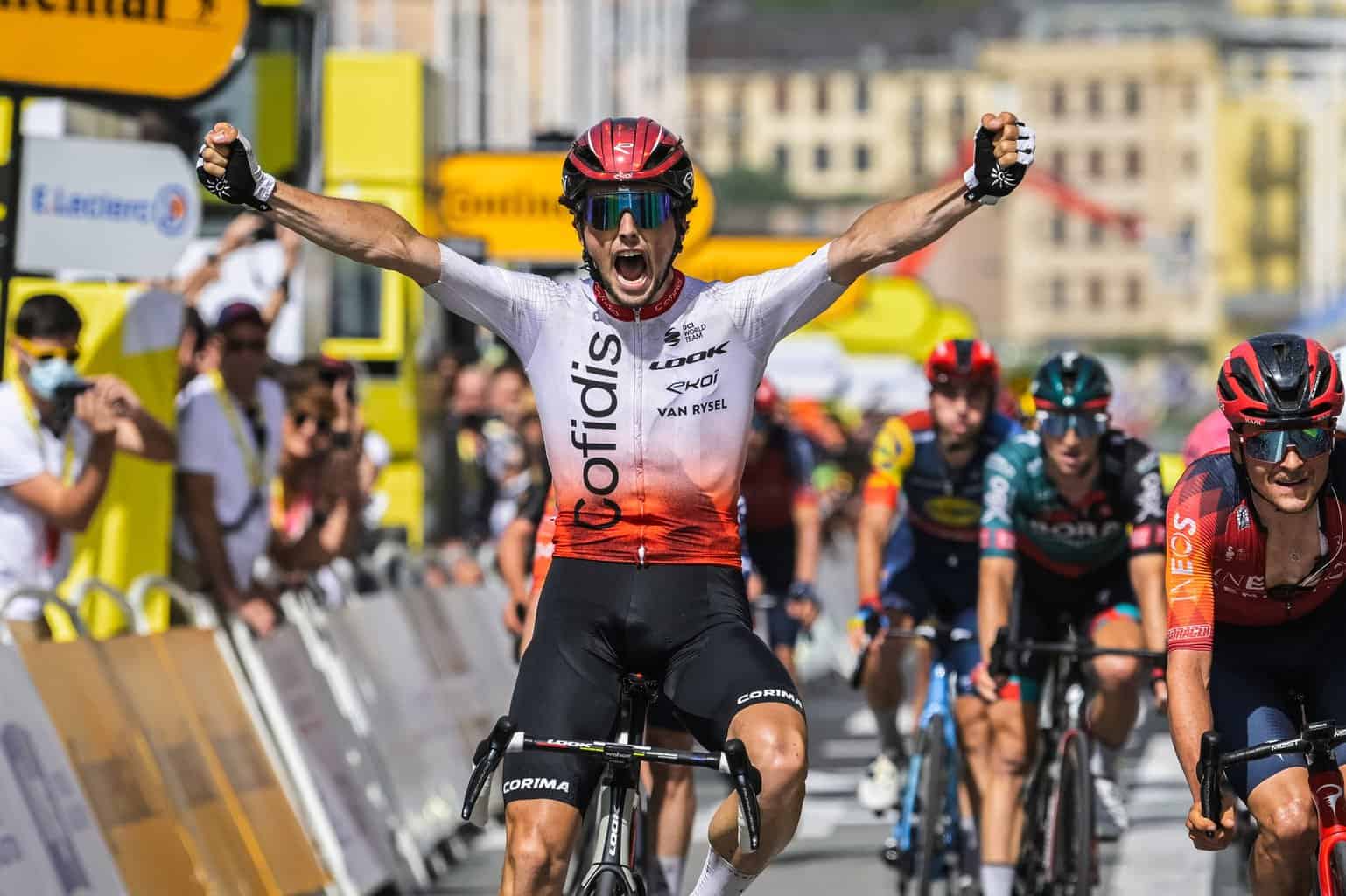
One of the most visible gear the Tour de France riders use is the helmet, besides their bikes and sunglasses . Many brands are known to release new models just in time for the Tour de France to gain maximum publicity. After all, the Tour de France is the pinnacle cycling race of the year.
Each team is provided with three types of helmets ;
- Aero helmets for maximizing aerodynamics and speeds. These are commonly used on flat and sprint finish stages and have minimal air vents to allow the air to flow smoothly through the helmet surface.
- Lightweight helmets are all about weight and breathability and are preferred for hilly and mountainous stages where each gram matters. These helmets have up to 20 air vents for maximum ventilation to cool down the riders.
- Time trial (TT) helmets are only used during time trials . Many models have just a handful of air vents (if any) as the helmet is designed to maximize aerodynamics.
All the helmet models are the brand’s top-of-the-line and/or latest models. Depending on the brands and models, they can cost anywhere from $200 to $400.
In 2023, there will be 16 bike helmet brands present at the Tour de France.
Ekoi (4 teams) and Specialized (3 teams) helmets are the most represented, followed by Abus (2 teams). The notable helmet brands absent are Bell and Giro.
One of the most visible gears at Tour de France 🇫🇷 is the riders' helmets besides their bikes 🚴 and sunglasses 🕶️. But did you know the most popular helmet brand at the race is one that not many know? It's not Giro, Kask or POC. pic.twitter.com/NoEv2AWDEu — Mr. Mamil (@MrMamil) July 2, 2023
2023 Tour de France Bikes and Gear
Tour de France Winning Bikes by Year (1903 to 2023)
2023 Tour de France Sunglasses Brands and Models Guide
2023 Tour de France Bike Brands and Models Guide
Helmet brands and models for each team
Here’s the breakdown of each helmet brand and models used by the teams.
Competitive Cyclist (US) is doing a 20% off POC helmets until the end of the Tour de France (23/7/2023). Find out more here .
2023 Tour de France helmet photos
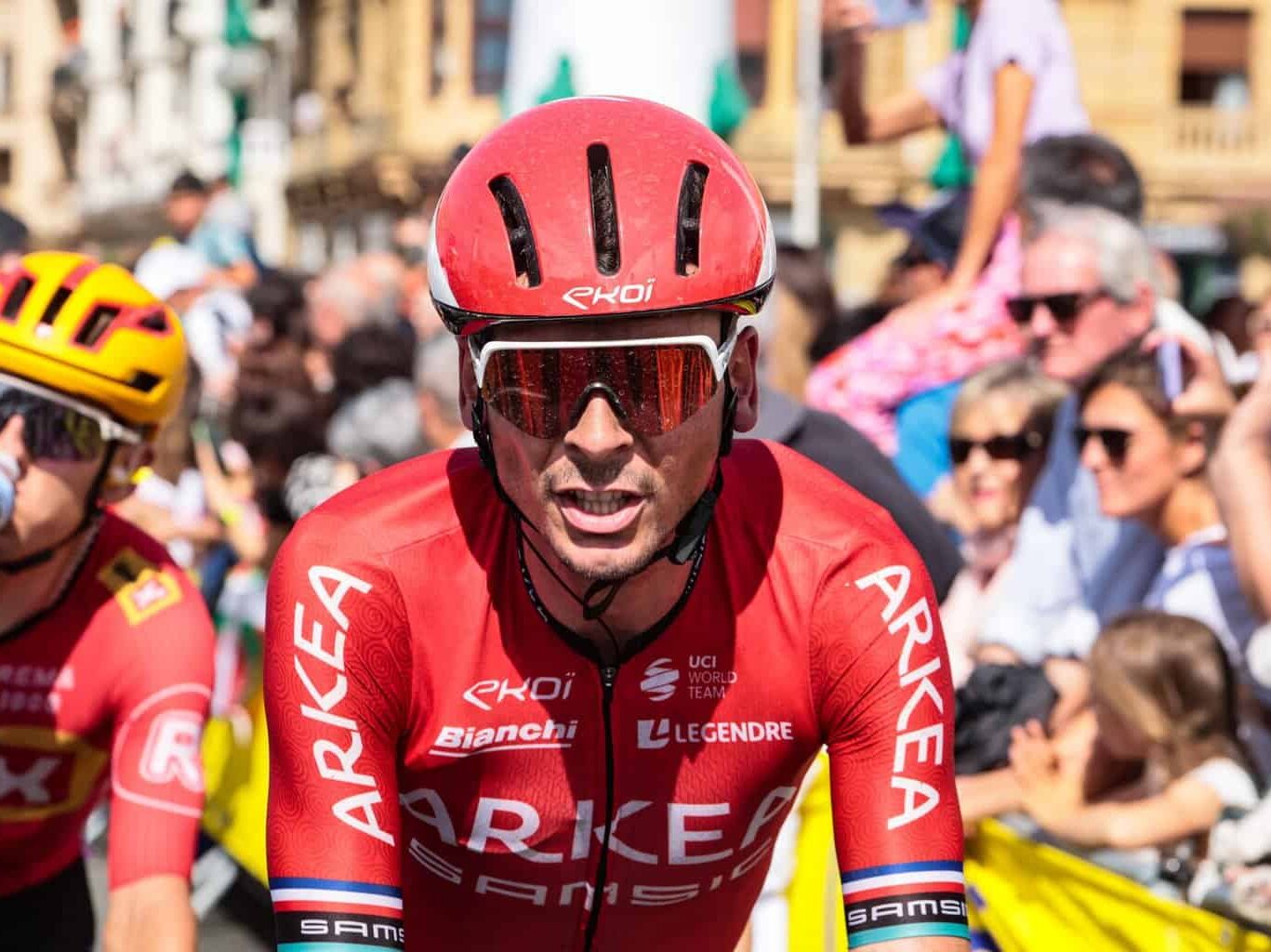
Tour de France Past Winners
Tour de France Climber’s Classification Winners, 1933-2022
Tour de France Team Classification Winners, 1930-2022
Tour de France Young Rider Classification Winners, 1975-2022
Who Has the Most Tour de France Stage Wins?
Who is the Tour de France Lanterne Rouge?
Who Won the Tour de France Green Jersey?
Who won the Tour de France Yellow Jersey?

Alex Lee is the founder and editor-at-large of Mr. Mamil. Coming from a professional engineering background, he breaks down technical cycling nuances into an easy-to-understand and digestible format here.
He has been riding road bikes actively for the past 12 years and started racing competitively in the senior category during the summer recently.
Mr. Mamil's content is for educational and entertainment purposes only. The content is not a substitute for official or professional advice. Please do your own due diligence.
Mr. Mamil participates in the Amazon Services LLC Associates Program, an affiliate advertising program designed to provide a means for us to earn fees by linking to Amazon.com and affiliated sites. We also participate in various other affiliate programs, and at times we earn a commission through purchases made through links on this website.
Privacy Policy
Website Terms
© Mr. Mamil, 2023

Bike Helmets at Tour de France 2022
Dan matthews.
- Last Updated : July 9, 2022
We are a reader supported site. We earn commissions when you buy through links on our site. Learn more.
It was just not that long ago that helmets were made mandatory in the Tour de France . That year was 2003 where a fatal crash of Andrei Kivilev at the second stage in Paris-Nice prompted the UCI to make helmets mandatory from the next race onwards.
These days all the equipment used by the pros comes under great scrutiny, especially at the Tour de France. Among others is the bike helmets they wear.
The helmet technologies have improved significantly over the years and we now have helmets designed for specific purposes with all the latest safety technologies. For example,
- Regular vs aero helmets. On hilly stages, riders will opt for regular helmets that lighter, have more air vents for better breathability. For flat and sprint stages, many will prefer helmets optimized for aerodynamics that have minimal air vents.
- Safety technologies such as MIPS (Multi-directional Impact Protection System) , SPIN (Shearing Pad Inside), Wavecel, and Koroyd can be found in the majority of the helmets the riders wear.
- Color and design. Most teams will have a team color/design for their helmets to match with their kits and bikes. A yellow helmet is worn by every rider of the team that is leading the Team’s Classification (the team that has the lowest cumulative time by adding the times of the three best riders of each team per stage).
For 2022, there 16 helmet brands at the Tour de France. There are three teams each wearing Ekoi and Specialized , helmets followed by two teams each for Abus and HJC helmets. The most notable brand missing out is Bell.
Some of the helmets also make it into our favorite helmet picks list . Let’s take a look at all the helmets used by each team.
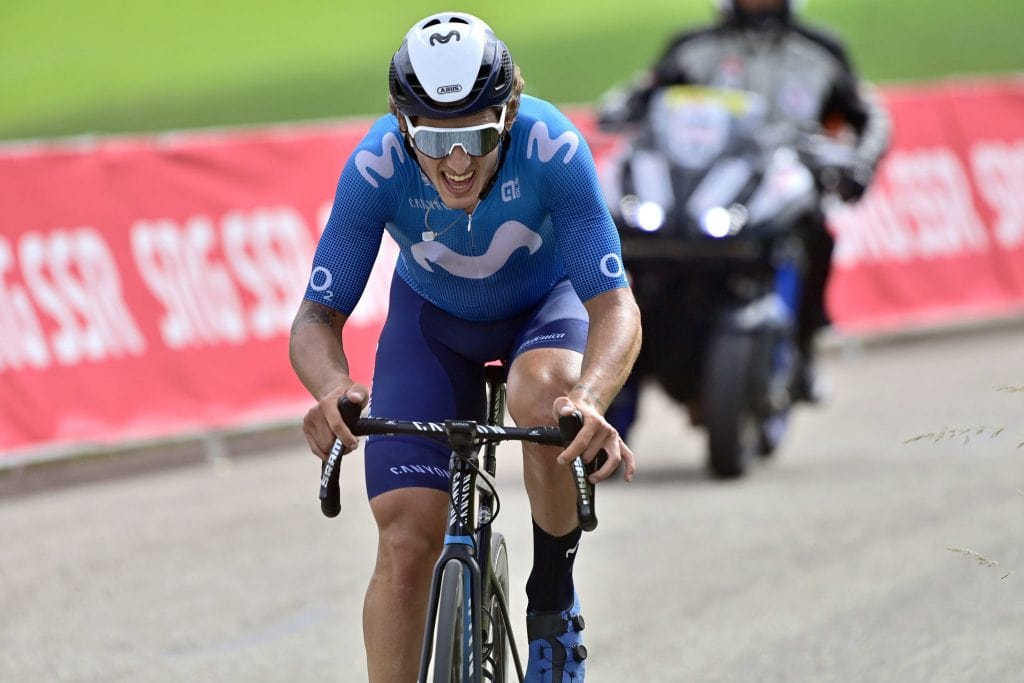
German-based Abus is a long-time, reputable brand when it comes to bike locks. A newcomer in the pro peloton, starting with Movistar in 2018, Abus has one of the nicest looking helmets in this year’s Tour de France.
See Mathieu van der Poel will be wearing the Abus Gamechanger on the cobblestone stage 5.
More info at Abus.
- Helmets Worn : Abus Aventor Quin (Regular), Abus Gamechanger (Aerodynamic), Abus Gamechanger TT
- Worn by : Alpecin-Fenix, Movistar Team
- Available at : Competitive Cyclist , Amazon , Wiggle
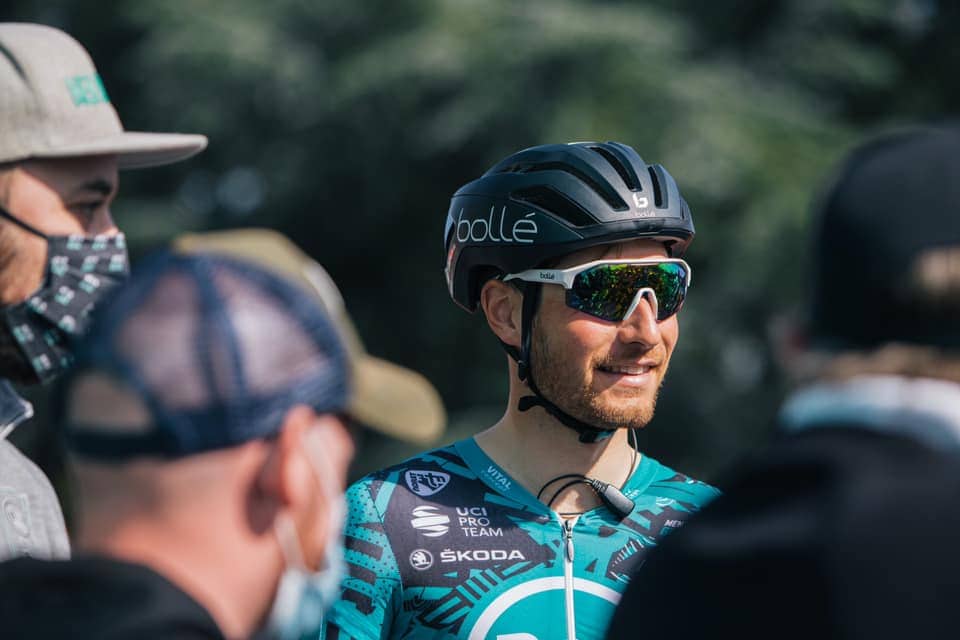
France-based Bolle has been around since 1888 and today manufactures helmets, goggles, and sunglasses for cycling and skiing. They’ve been a mainstay in the pro peloton in recent years with Orica GreenEdge wearing their sunglasses in the past.
More info at Bolle.
- Helmets Worn : Bolle Furo MIPS (Regular), EXO MIPS (Aerodynamic),
- Worn by : B&B Hotels p/b KTM
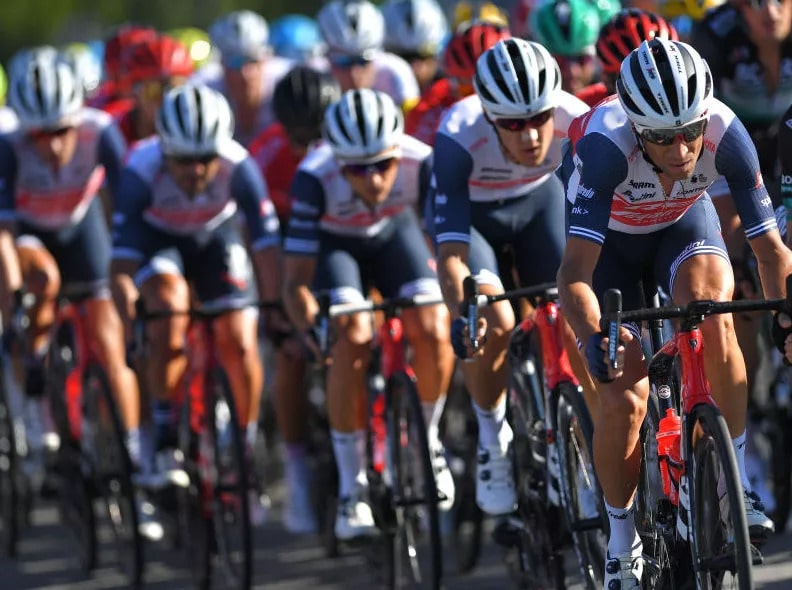
Bontrager is the sister brand of bike manufacturer, Trek. Bontrager produces everything from helmets to saddles, wheelsets, and bike lights. So, it’s no surprise that Trek-sponsored teams will be using Bontrager equipment such as helmets and wheels (similar to Specialized sponsored teams).
More info at Trek.
- Helmets Worn : Bontrager Velocis MIPS (Regular), Bontrager XXX WaveCel (Aerodynamic)
- Worn by : Trek Segafredo
- Available at : Trek Bikes
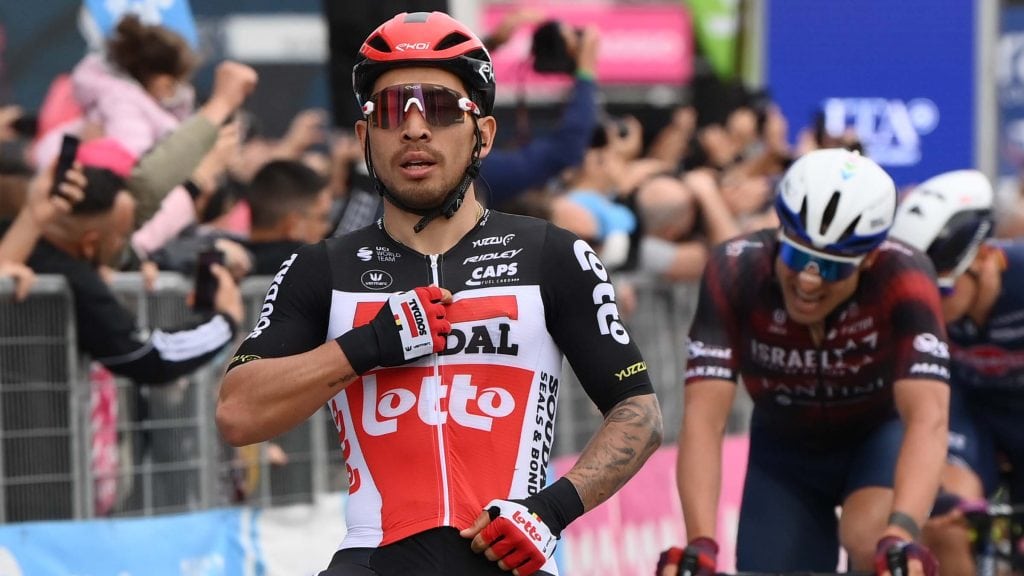
Based out of France, Ekoi which was founded in 2001 has grown to be a reputable brand in the cycling clothing market especially with helmets and sunglasses. Their direct-to-consumer model means that Ekoi products are 30% to 40% cheaper than its competitors.
Expect to see Caleb Ewan sprinting to his next Grand Tour win at the Tour de France in the Ekoi AR14 .
- Helmets Worn : Ekoi Legende (Regular), Ekoi AR14 (Aerodynamic), Ekoi Chrono (TT)
- Worn by : Cofidis, Lotto-Soudal, Team Arkea-Samsic
- Available at : Ekoi
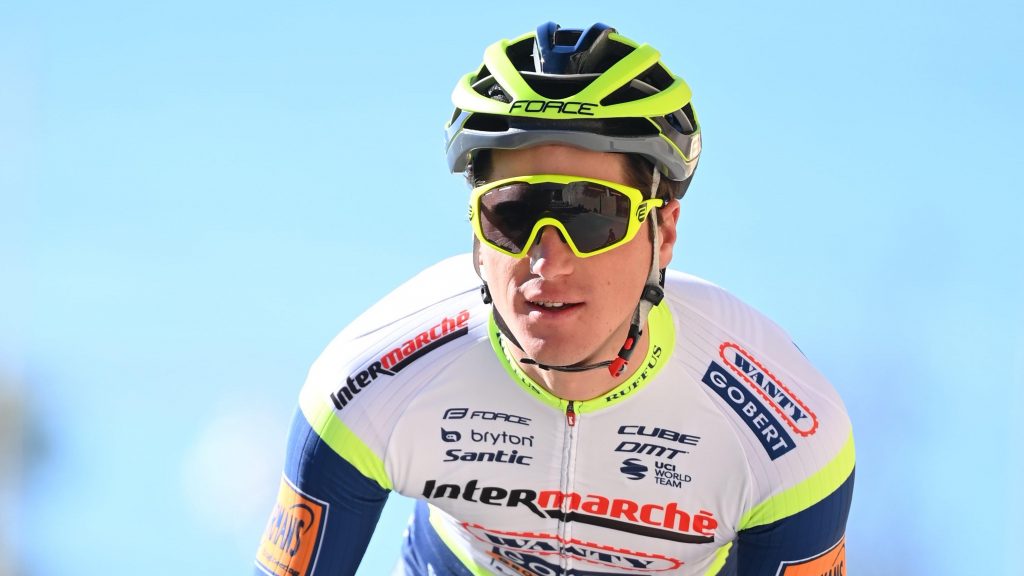
A relatively unknown outside of the mainstream cycling brands, Czech-based Force manufactures a wide range of cycling accessories, clothing, components, and tools. Their products are mainly found in Europe and Central Asia through their growing network of dealers.
More info at Force.
- Helmets Worn : Force Lynx (Regular), Force Neo Orca (Aerodynamic),
- Worn by : Intermarché Wanty Gobert Materiaux
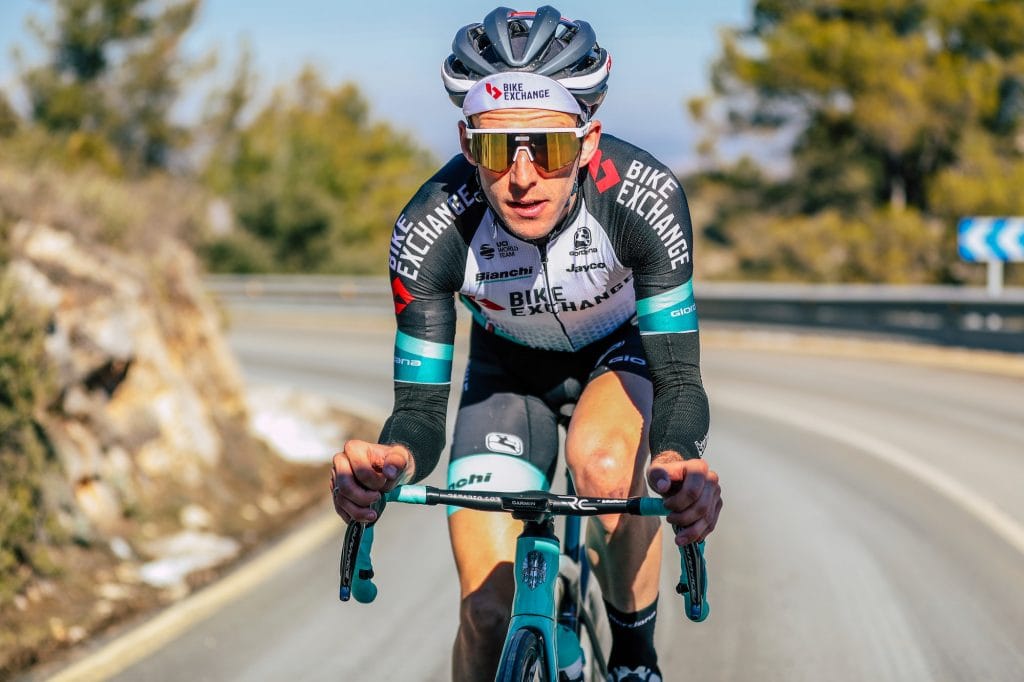
With a long presence in the pro peloton dating back to pre-2000, Giro helmets are used by three teams in this year’s Tour de France. Besides helmets, Giro is an established brand when it comes to cycling shoes.
Riders will have three helmet choices; Giro Aether Spherical (regular), Giro Vanquish (aerodynamic), and Giro Aerohead (TT) helmets to choose from.
Trek-Segafredo riders will be wearing the Giro Aerohead TT helmet for time trials as their helmet provider, Bontrager doesn’t produce a TT helmet.
- Helmets Worn : Giro Aether Spherical (Regular), Giro Vanquish MIPS,(Aerodynamic), Giro Aerohead MIPS (TT)
- Worn by : Groupama-FDJ
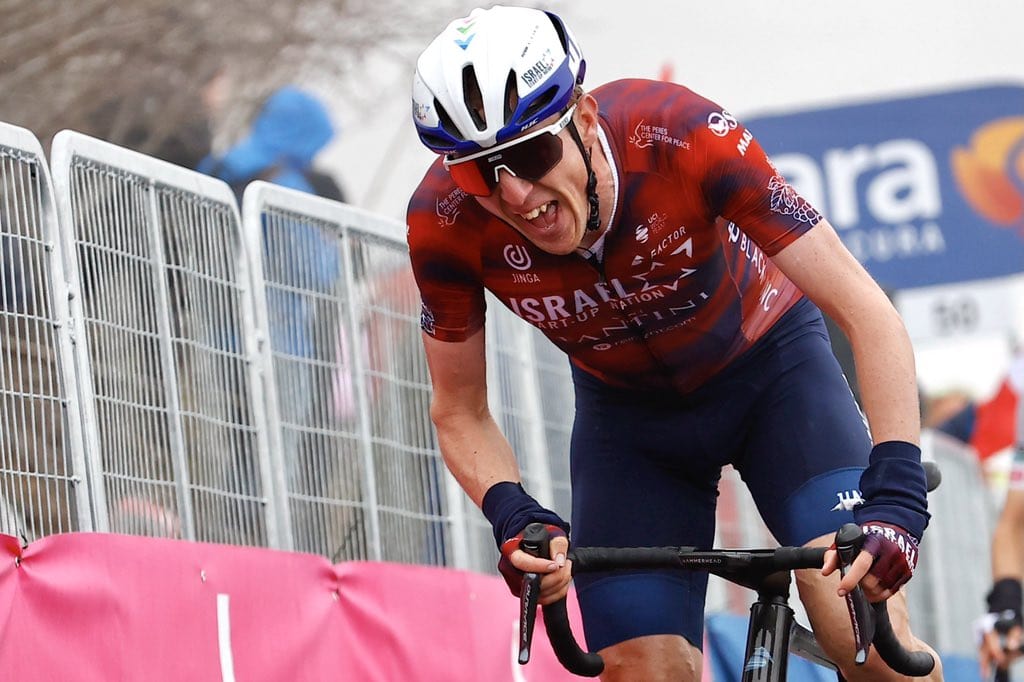
Another relative newcomer into the pro peloton, HJC is an established brand among Moto GP riders with a history dating back to 1971. HJC’s helmets feature their patented technologies such as COOLPATH for efficient airflow and cooling and SELFFIT for automatic self-adjustment.
Expect to see Chris Froome riding his tenth Tour de France wearing the HJC Ibex 2.0 in the high mountains.
More info at HJC.
- Helmets Worn : HJC Ibex 2.0 (Regular), HJC Furion 2.0 (Aerodynamic), HJC Adwatt 1.5 (TT)
- Worn by : AG2R Citreon Team, Israel Premier Tech
- Available at : Wiggle
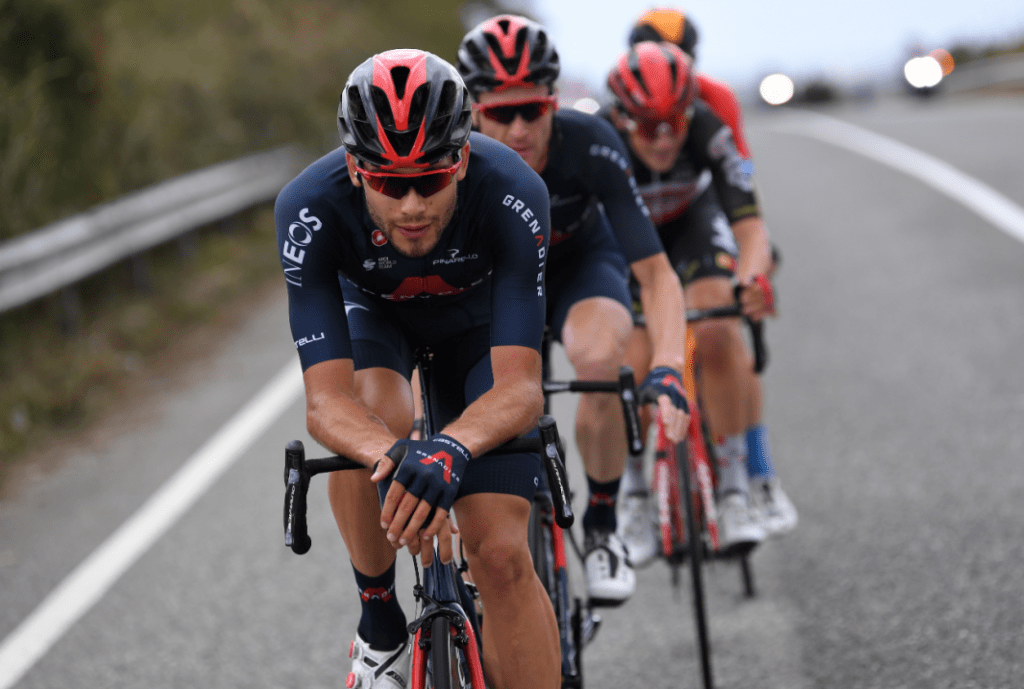
Kask is worn exclusively by Ineos Grenadiers (Team Sky) since its inception in 2010 and has won the most Grand Tours in the last decade. Undoubtedly, Kask is the most well-known helmet brand within the cycling industry.
The Kask Protone has been a mainstay in their helmet lineup for many years and hasn’t been updated for more than 5 years. Expect to see the Ineos Grenadiers train riding at the front all day long sporting the latest Kask Protone.
- Helmets Worn : Kask Protone, Kask (Regular), Kask Valegro (Lightweight), Kask Utopia (Aerodynamic), Kask Bambino (TT)
- Worn by : Ineos Grenadiers
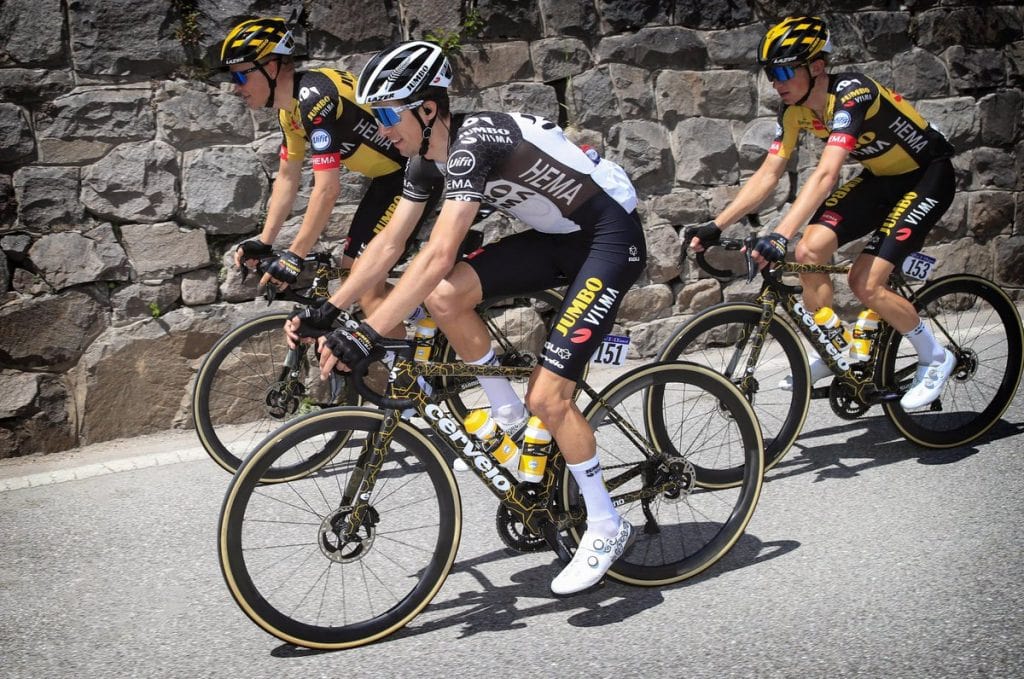
Belgian helmet manufacturer Lazer is another old-timer in the pro peloton with almost a century of history. They started by designing leather caps for tough men riding over cobblestone in Belgium before evolving into the technically advanced helmets we see today.
Get ready to see Primoz Roglic challenge for the overall win, supported by his trusted lieutenants such as Sepp Kuss and Wout van Aert wearing the Lazer Genesis .
More info at Lazer.
- Helmets Worn : Lazer Genesis (Lightweight), Lazer Bullet 2.0 (Aerodynamic), Lazer Volante (TT)
- Worn by : Team Jumbo Visma
- Available at : Competitive Cyclist , Amazon
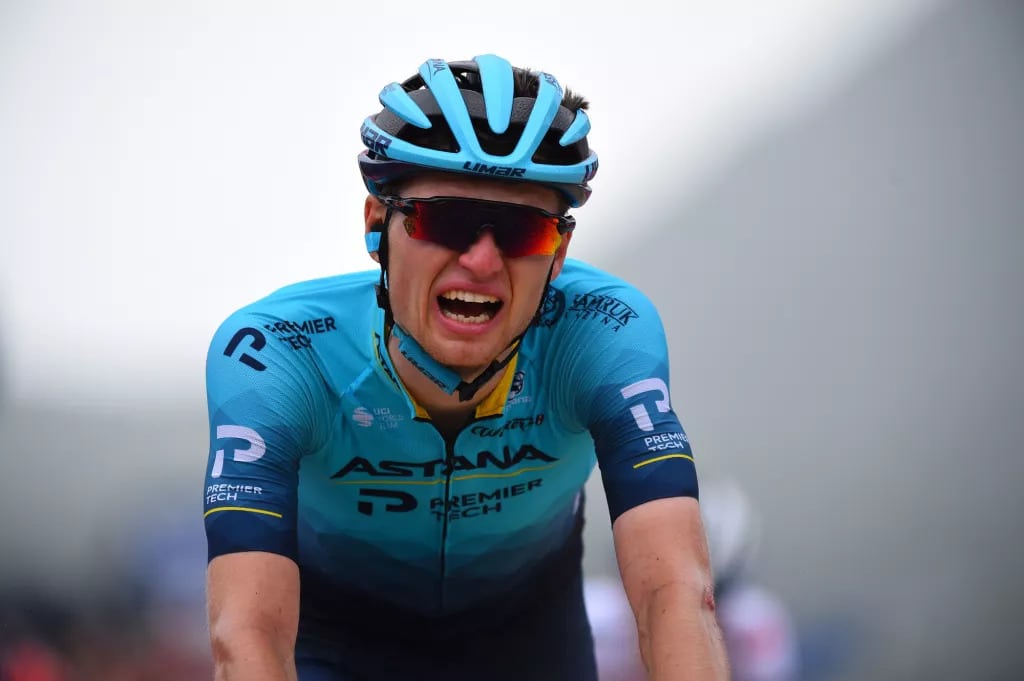
Based out of Bergamo in Italy, Limar manufactures a range of helmets for all cycling disciplines from road to gravel, mountain biking, gravel, and kids. The riders will use Limar’s top-of-the-line helmets at the Tour de France this year.
- Helmets Worn : Limar Air Pro (Regular), Limar Air Speed (Aerodynamic), Limar Air King (TT)
- Worn by : Astana-Qazaqstan
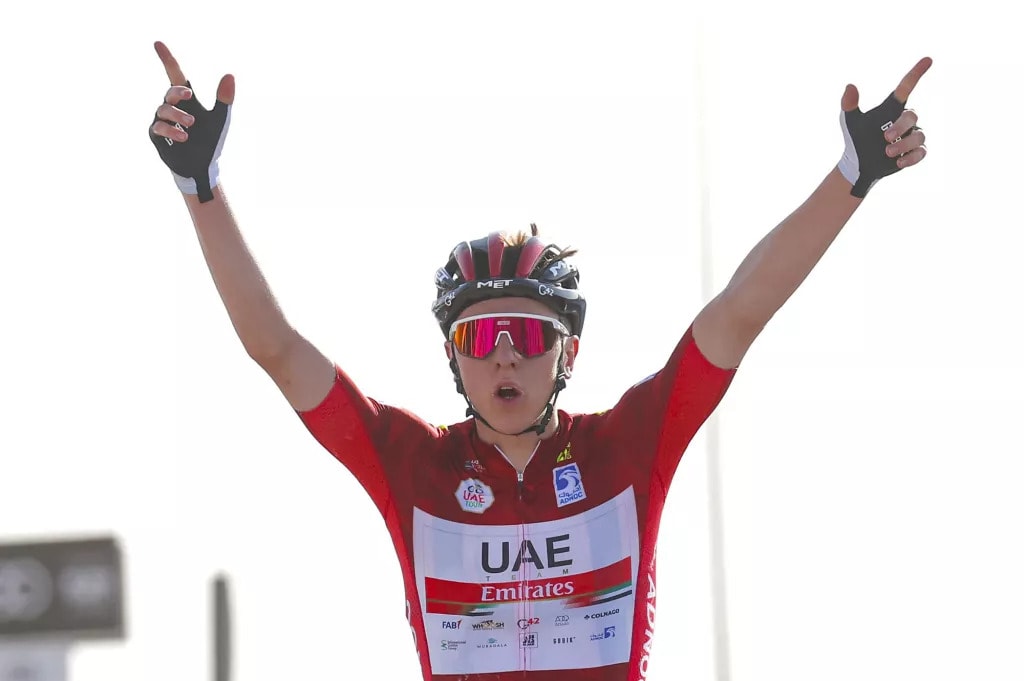
One of the fastest-growing helmet brands, MET is based in the Valtellina valley in the Italian Alps. They’re just 100km away from the Stelvio and 20km from Lake Como.
Worn by Tadej Podgacer to his maiden Tour de France win in 2020, MET will continue with the UAE Team Emirates for this year. Expect to see Tadej Podgacer wearing the MET Trenda 3K Carbon helmet on the hilly stages.
More info at MET.
- Helmets Worn : MET Trenda 3K Carbon (Regular), MET Manta MIPS (Aerodynamic), MET Codatronca (TT)
- Worn by : UAE Team Emirates
- Available at : Wiggle
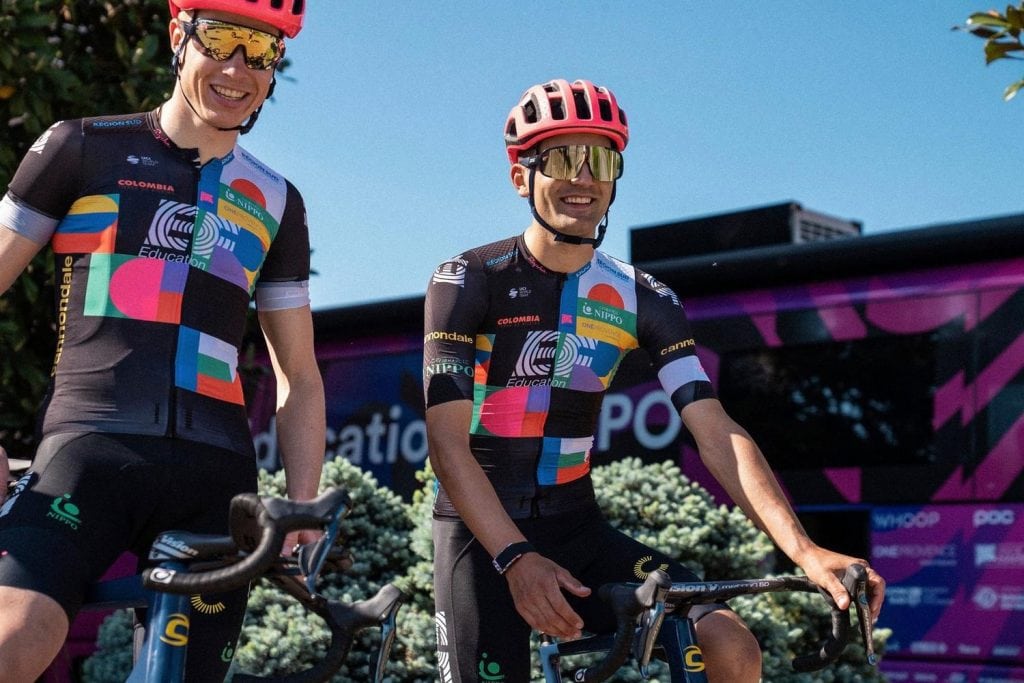
Swedish-based, POC designed one of the most good-looking bike helmets in the pro peloton today. They’re also the inventor of SPIN (Shearing Pad Inside) safety technology which is used in their helmets. You’ll spot a light blue liner inside all POC helmets today.
With the pink POC Ventral SPIN Air helmets, you definitely can’t miss them on TV.
More info at POC.
- Helmets Worn : POC Ventral SPIN Air (Regular), POC Ventral SPIN (Aerodynamic), POC Cerebel (TT)
- Worn by : EF Education Nippo
Rudy Project
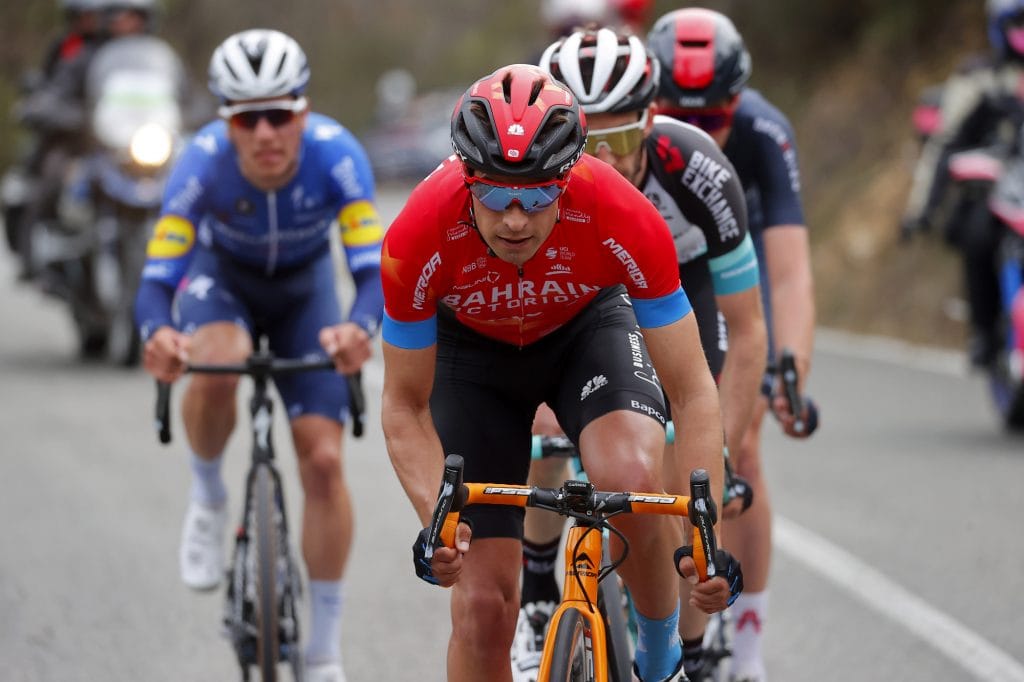
Started in 1985 in Italy, Rudy Project is a leading brand in outdoor accessories. They make helmets and sunglasses for various sports such as cycling, running, beach, winter, and watersports.
More info at Rudy Project.
- Helmets Worn : Rudy Project Spectrum (Regular), Rudy Project Volantis (Aerodynamic), Rudy Project The Wing (TT)
- Worn by : Bahrain Victorious
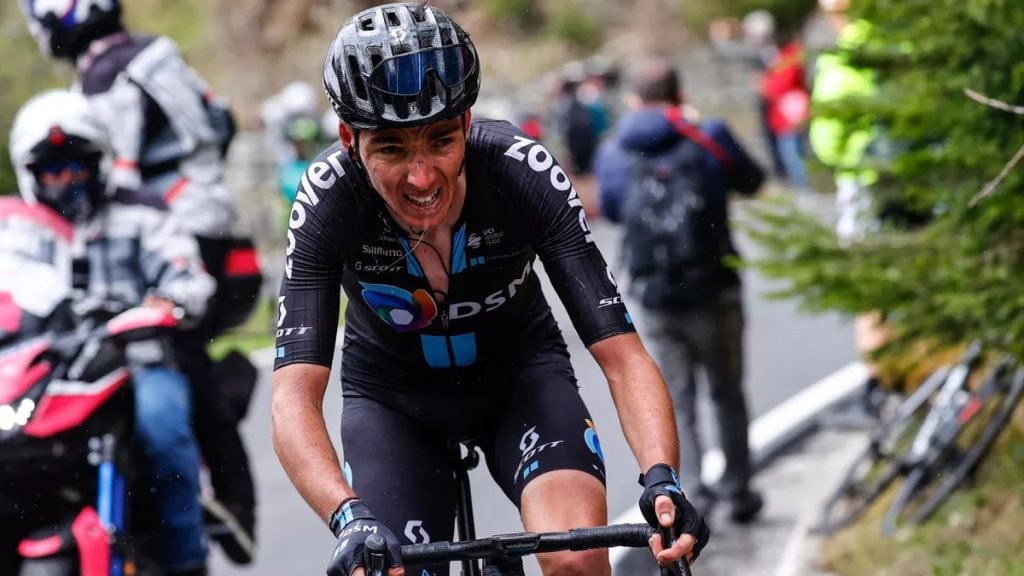
Scott helmets are worn by Scott-sponsored teams, similar to Trek and Specialized teams. Known for its bikes, Scott also manufactures bike components such as wheels, handlebars, and saddles under its sister brand Syncros.
More info at Scott.
- Helmets Worn : Scott Centric Plus MIPS (Regular), Scott Cadence Plus (Aerodynamic)
- Worn by : Team DSM
Specialized
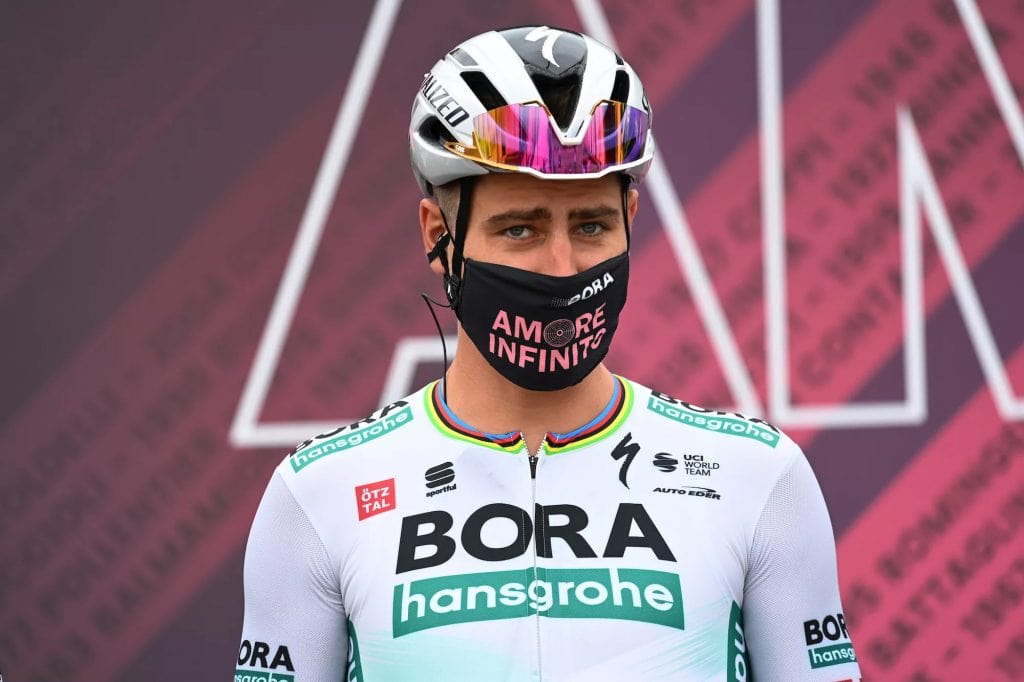
Specialized helmets are worn exclusively by Specialized sponsored teams in recent years. From our observation, if the team is riding a Specialized bike, they will be using Specialized’s other equipment such as wheels (Roval), tires, helmets, and shoes.
Get ready to see fireworks animated by current Road World Champion Julian Alaphilippe in the S-Works Prevail 2 and 3X champion Peter Sagan in the S-Works Evade .
- Helmets Worn : S-Works Prevail 2 (Regular), S-Works Evade (Aerodynamic), S-Works TT
- Worn by : BORA Hansgrohe, QuickStep Alpha Vinyl Team, Total Energies
- Available at : Competitive Cyclist , Jenson USA
Author Recommended Reads
- 9 Things You Should Know Before Buying A Bike Helmet
- 15 Cycling Fashion Faux Pas to Avoid at All Costs
More Cycling Gear
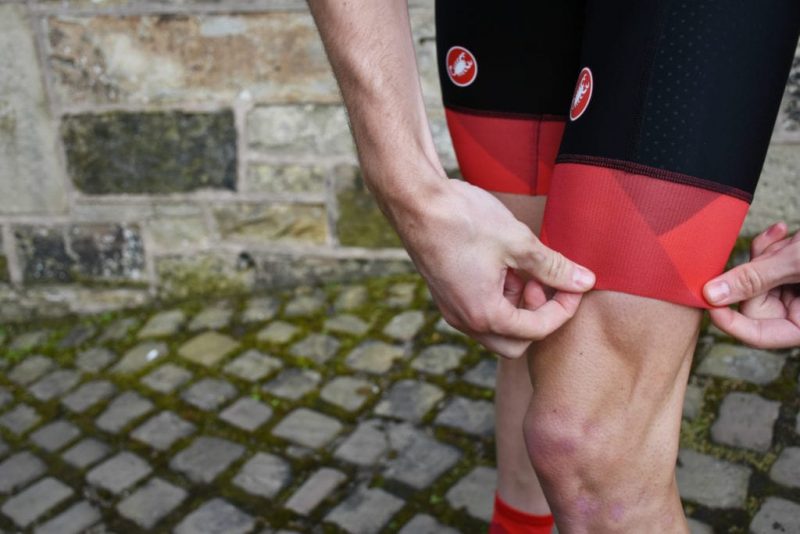
The Best and Bib Shorts for Road Cycling in 2023
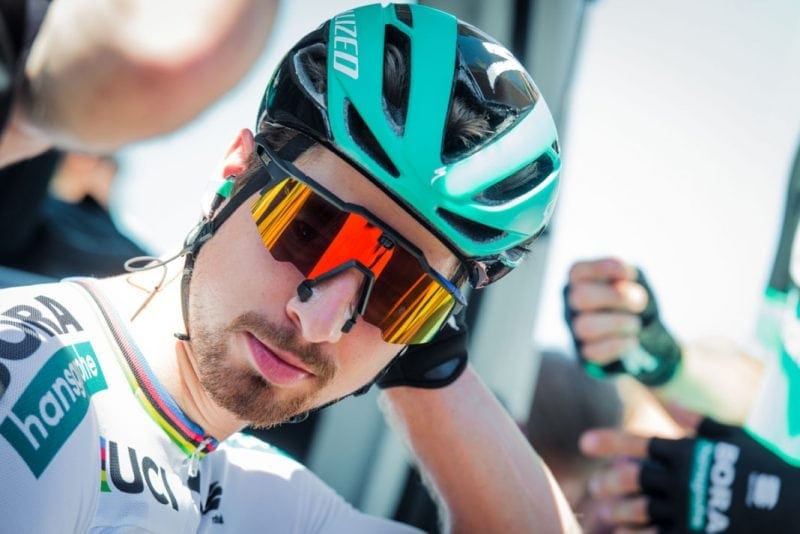
The Best Cycling Sunglasses in 2023
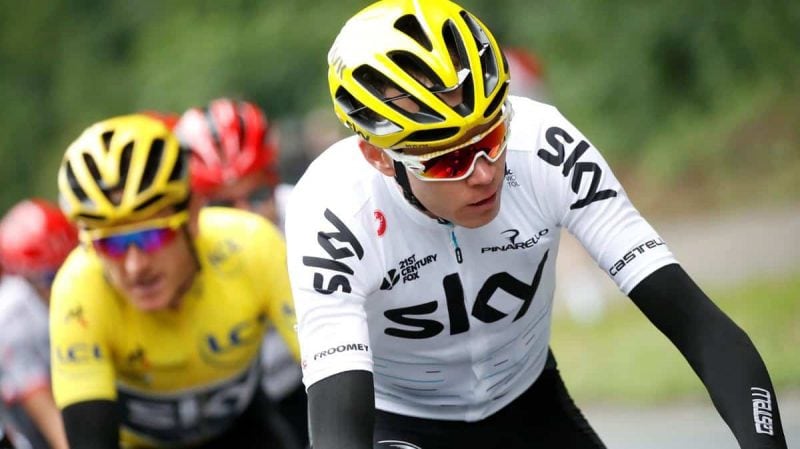
The Best Road Bike Helmets in 2023
Please wait while you are redirected to the right page...
2-FOR-1 GA TICKETS WITH OUTSIDE+
Don’t miss Thundercat, Fleet Foxes, and more at the Outside Festival.
GET TICKETS
BEST WEEK EVER
Try out unlimited access with 7 days of Outside+ for free.
Start Your Free Trial
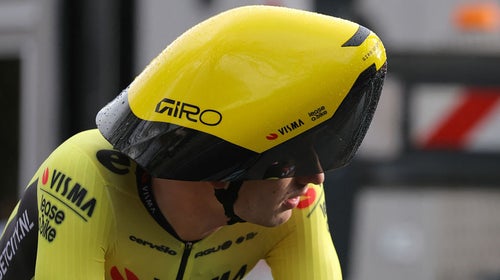
The Latest Cycling Controversy Involves This Crazy Helmet
Tour de France team Visma–Lease a Bike debuted the Giro Aerohead II this week, and the massive helmet generated an impressive tonnage of online discourse

Heading out the door? Read this article on the Outside app available now on iOS devices for members! >","name":"in-content-cta","type":"link"}}'>Download the app .
God Bless professional cycling for producing goofy and hilarious controversies.
In 2023, we had the kerfuffle involving a blown pee stop , as well as an accusation of beer drinking during the Tour de France lobbed at French riders. The latest squabble involves a bike helmet that Darth Vader might wear to a space disco.
On Monday, Dutch cycling team Visma–Lease a Bike unveiled a radical new helmet design at Italy’s Tirreno-Adriatico race, a warmup event for stars of the Tour de France. The helmet, called the Giro Aerohead II, looks pretty weird, right? I suggest analyzing the thing from multiple angles to properly bask in its garish and deranged glory. It’s as if the nose cone from a Boeing 747 and the Oscar Meyer Wienermobile met on Tinder and, well, you get the rest of the joke.
🇮🇹 #TirrenoAdriatico Recon time. 👀 Excited to use our brand new innovative Giro helmets for the first time. 🚀 pic.twitter.com/B7uj77Iwq9 — Team Visma | Lease a Bike (@vismaleaseabike) March 4, 2024
The Aerohead II represents the latest feat of bike-industry engineering aimed at attaining an aerodynamic advantage during road cycling’s individual time trial—yes, the feared race against the clock. In these painful events, cyclists pedal by themselves over flats, hills, and descents, and often the margin of victory is determined by whomever has the most aerodynamic gear and gizmos.
Cycling has a long history of goofy time trial helmets designed to cheat the wind, and I could write thousands of words about the zany designs of yesteryear. Back in the days of Lance Armstrong, aero helmets were little more than sleek, paper-thin plastic fairings that offered zero skull protection in the case of a crash. But over the years, the Union Cycliste International (UCI), the sport’s governing body, passed rules requiring the helmets to pass safety tests—you know, so they actually protect a bike racer’s brain. To meet these benchmarks, helmet manufacturers were forced to create wider and more bulbous models with all manners of aerodynamic innovations, such as golf ball-like dimples , skull-cooling vents , and in the case of the Specialized TT5 helmet, an unfortunate elastic face sock .
The Aerohead II is simply the latest and not-so-greatest product berthed by the aero arms race, and boy did it ruffle feathers. Photos of the helmets quickly circulated on social media, and within a few hours the meme brigade did its thing, comparing the Visma–Lease a Bike riders to Dark Helmet from the 1987 comedy Spaceballs and other helmet-wearing figures from popular culture.
“My brains are going in to my feet” ludicrous speed. Jumbo Visma Lease a Bike pic.twitter.com/ebJXgtGyWs — Alastair Maher (@alastairmaher) March 5, 2024
❗️Team Visma | Lease a Bike reveal 2025 helmet prototype pic.twitter.com/WbNu1x63dH — Rúben Silva (@EchelonsHub) March 4, 2024
Team Visma – Lease a Bike in de Tour van 2026. pic.twitter.com/5UXOPMRIgo — John den Braber OLY (@JohndenBraber) March 5, 2024
📸 Van 'helm voor kratje pils' (Zonneveld) tot 'Urbanus-kopie': iedereen besprak nieuwe helm Visma | Lease a Bike https://t.co/YYpzxijl34 — In de Leiderstrui (@IndeLeiderstrui) March 5, 2024
The memes, of course, were followed by the takes—mostly negative. It sucks! It’s ugly! But a lot of the opposition was followed by an important caveat— maybe the Aerohead II is faster than the other helmets out there . Visma–Lease a Bike is the most dominant team in cycling at the moment, having won the Tour de France, Giro d’Italia, and Vuelta a España in 2023. The squad employs an army of coaches, trainers, and gear specialists. Armchair experts wondered: would the team really approve of a weird helmet if it wasn’t faster than the others? In total, the hubbub around the Aerohead II produced an impressive tonnage of online discourse. Late in the day my father—who is as casual a cycling fan as they come—texted me with a photo of the helmet. What the hell is this thing?
There are times when any attention is good attention, and for pro cycling, early March is one of those periods. Nobody outside of the inner circle of hardcore cycling nerds cares about Tirreno-Adriatico, yet the Aerohead II got at least a few casual cycling fans to talk about bike racing in late winter. I wondered to myself how the wider world would react to the strange helmet this July, when Visma–Lease a Bike riders wore it at the Tour de France.
But that’s unlikely to happen. On Tuesday, the UCI issued a statement saying that aerodynamic helmets like the Aerohead II had pushed the boundaries of acceptable design, and that the agency would review its own standards for helmets. “The Aerohead II… raises a significant issue concerning the current and wider trend in time trial helmet design, which focuses more on performance than the primary function of a helmet, namely to ensure the safety of the wearer in the event of a fall,” the statement said. The release also said that the Specialized face sock was now banned—which, let’s be honest, is for the best.
On Wednesday, Visma–Lease a Bike pushed back against the UCI, stating that team officials had worked with Giro for more than a year to create the Aerohead II to meet the governing body’s standards on helmet dimensions and impact resistance. “It is quite striking that this statement has now come,” Mathieu Heijboer, the team’s head of performance, told Dutch news outlet AD . “It’s driven by emotions and all the reactions on social media. I have no problem with jokers on the Internet. But if the UCI has a problem with the design, they should have indicated this when the helmet was submitted for approval.”
"Napoleon", "Alien", "Darth Vader" and "Donald Duck" enter a bar in France. #ParisNice https://t.co/hdCYJqv2WP — Mihai Simion (@faustocoppi60) March 5, 2024
Anyone who follows pro cycling knows what is about to happen: the UCI will likely ban the Aerohead II and probably a few other helmets from competition. You see, in addition to enforcing the rules of fair play, the UCI acts as the sartorial overlord for pro cycling, and over the years it has prohibited products and outfits that violate the style sensibilities of pro cycling’s cultural history. For instance, there are rules that govern the height of a rider’s socks, and ones that govern the fabric that can be used for bike jerseys. The bike itself is governed by a whole set of regulations that oversee everything from the angle of a bike’s handlebars, to the shape of the tubing used for frames. These regulations prevent the sport’s look and feel from evolving too far from that of the olden days, when riders puffed on cigarettes and swilled wine during major races.
I’ve covered pro cycling since 2004, and my guess is the Aerohead II is toast. Anyone who followed the ordeal play out on social media this week likely just witnessed the shortest lifespan of a piece of cycling gear in history. I assume the Aerohead II will soon fade into cycling lore alongside other banned items, like the Cinelli Spinaci handlebar extensions, or the weird Old Faithful bicycle ridden by Scottish racer Graeme Obree, or Spinergy Rev X wheels .
But hey, we’ll always have the memes.
- Tour de France
Popular on Outside Online

Enjoy coverage of racing, history, food, culture, travel, and tech with access to unlimited digital content from Outside Network's iconic brands.
Healthy Living
- Clean Eating
- Vegetarian Times
- Yoga Journal
- Fly Fishing Film Tour
- National Park Trips
- Warren Miller
- Fastest Known Time
- Trail Runner
- Women's Running
- Bicycle Retailer & Industry News
- FinisherPix
- Outside Events Cycling Series
- Outside Shop
© 2024 Outside Interactive, Inc
Spotted: Team BikeExchange riding new Giro aero road helmet at the Tour de France?

- Click to share on Facebook (Opens in new window)
- Click to email a link to a friend (Opens in new window)
Hang around pro cyclists long enough, and you’re bound to spot new gear before it’s launched. There has been speculation for months that Giro’s sponsored teams have been testing a new aero road helmet, but the company’s recent facebook posts are putting the helmet in question right out in the open.
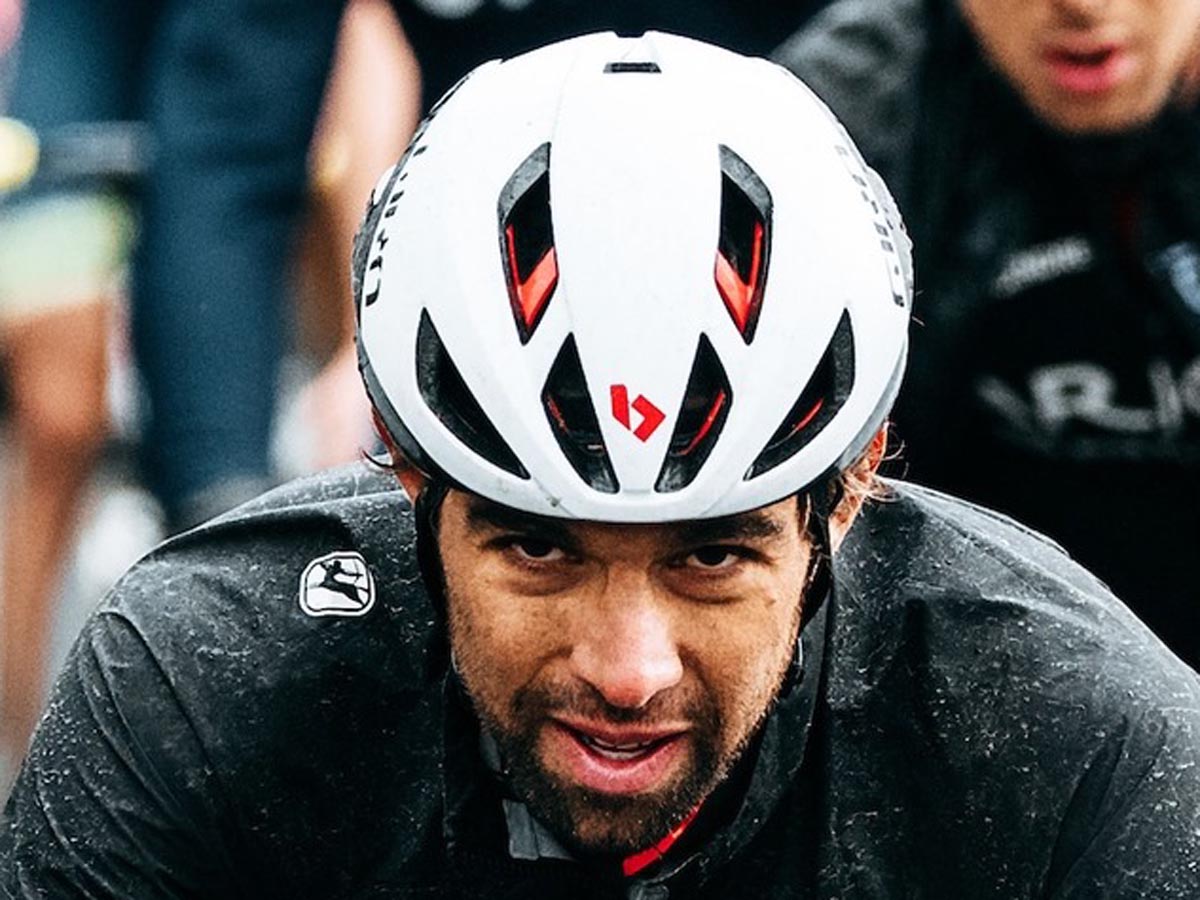
Shown on the heads of Team BikeExchange, the white helmet has a different vent layout than anything in the current Giro lineup.

But the gap in ventilation on the sides of the helmet are reminiscent of the current Giro Vanquish. The addition of a new aero road helmet would make the most sense as well – Giro has already updated their flagship road helmet in 2018, the Aether Spherical . It wouldn’t be surprising to see that the Vanquish may be updated with Giro’s MIPS Spherical safety tech to bring it up to date with the rest of their premium helmets.
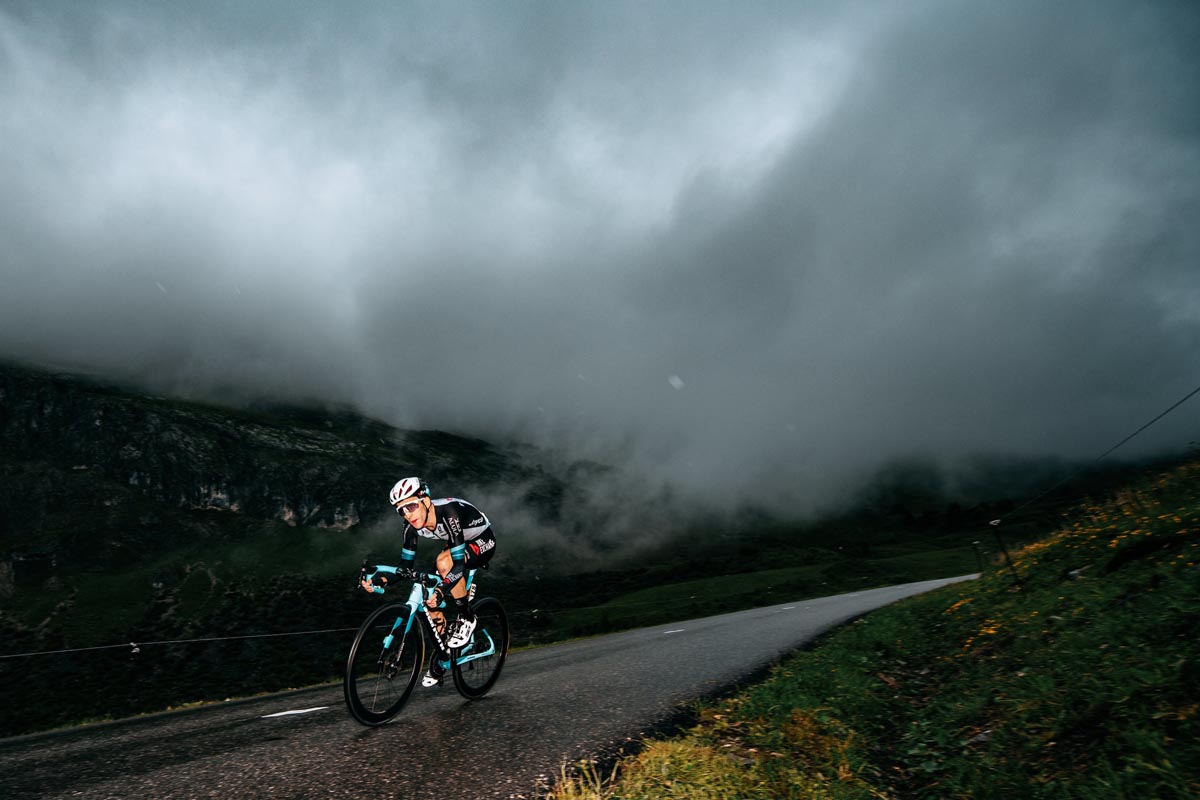
When asked about the possibility of a new helmet, we were told that “there is no formal comment from Giro at the moment.” However, we wouldn’t be surprised to hear that Giro officially has a new model as we near tradeshow season later this fall. Stay tuned.
Zach Overholt is the Editor in Chief of Bikerumor . He has been writing about what’s new in the bicycle world for 12+ years. Prior to that, Zach spent many years in the back of a bicycle shop building and repairing nearly every type of bike, while figuring out how to (occasionally) ride them.
Based in Ohio, Zach is now slowly introducing a new generation to cycling and still trying to figure out how to fit the most rides into a busy schedule as a new dad.
This site uses Akismet to reduce spam. Learn how your comment data is processed .
Hopefully it vents better than the Vanquish. I switched to the Speshy Evade II because it actually keeps my head cool when moving,
They have been using it since the spring classics. As have grupamma fdj, and canyon-sram. Just now noticing?
Follow Us On
Subscribe Now
Sign up to receive BikeRumor content direct to your inbox.

- Buyer’s Guide
- Gear Reviews
- Rides+Events
- Training Guide
- Maintenance
Giro unveils Synthe MIPS helmet at Tour de France
As top-of-the-line bike helmets go, giro sport design's new synthe mips already has most of the conventional bases covered. now, there's the advanced design that will protect your head when you need it most..
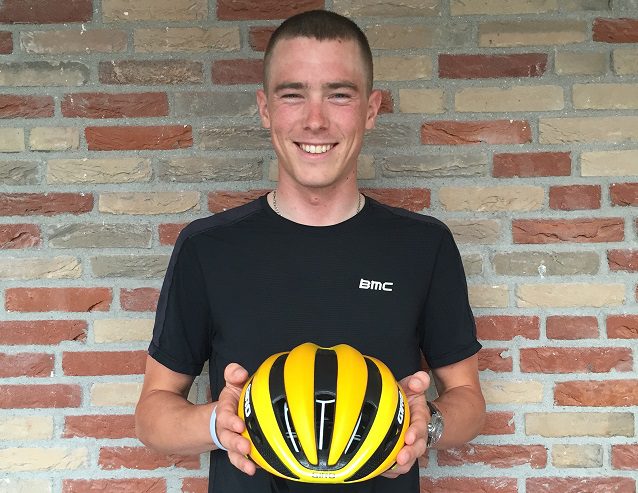
As top-of-the-line bike helmets go, Giro Sport Design’s new Synthe MIPS already has most of the conventional bases covered: effective aerodynamics, feather-light weight and cooling power that might just make you forget you have the helmet on during the sweltering peak of a summer.
Now, there’s the advanced design that will protect your head when you need it most.
This model is outfitted with MIPS: Multi-Directional Impact Protection System . It provides greater protection especially when rotational forces are involved. MIPS’s three components are its interior foam liner, a low-friction liner and an elastometric attachment system that connects them. The effects of these elements, as Giro discovered during testing, are substantial.
Say, for example, you collide with an obstacle at an angle. In that event, the embedded elastometric attachment system stretches, permitting the interior foam liner to rotate independently around a rider’s head, redirecting the energy of the impact. It only moves a few millimetres, but in this case, a little goes a long way. Tests demonstrate that this type of design technology has the effect of reducing rotational force during an impact—energy that can be transferred to the brain with terrible results.
The aerodynamics, too, have been augmented from Giro’s acclaimed Air Attack model of helmet. The Synthe MIPS uses Wind Averaged Drag, a formula based on a physics package that factors in 72 yaw angles, averaging them with a single drag measurement that assumes a standard head angle of 30 degrees and a speed of 25 m.p.h. As a result, the Synthe MIPS boasts a more aerodynamically efficient performance than any of Giro’s other tried-and-tested road helmets. With its lightweight construction—the Synthe MIPS weighs only 260 g, a comparatively light design for a helmet with an adjustable fit system, strapping, and ports for affixing accessories such as sunglasses—that aerodynamic performance is further streamlined.
“The Synthe MIPS is a testament to the energy and resources that we put into helmet design,” said Giro’s marketing manager Amanda Schaper. “By combining our advanced research and design capabilities, as well as our close association with MIPS Technologies, we continue to pursue new ideas that can give riders what they demand.”
“We’ve taken our greatest lessons that we’ve learned in Giro’s 30 year history, wrapped up into one extraordinary helmet. And it is so rewarding to see it embraced by three different teams at the Tour de France.” At this year’s Tour, the BMC Racing Team, Katusha Racing Team, and IAM Cycling are all rolling out the stylish, sophisticated head gear as a high-profile, global preview.
For the cycling public, the Synthe MIPS will be available in August at Giro Authorized Dealers for US$270.

- Email address: *
- Comments This field is for validation purposes and should be left unchanged.
Gear-obsessed editors choose every product we review. We may earn commission if you buy from a link. How we test gear.
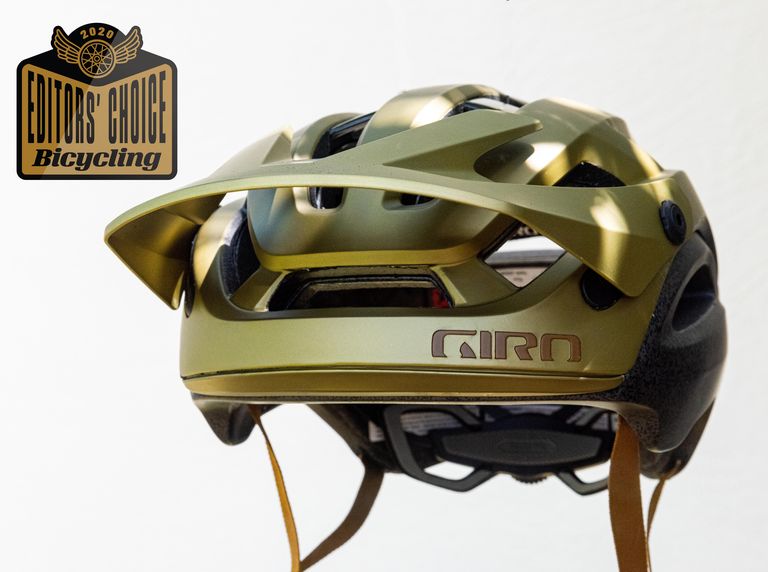
Giro’s Manifest Mountain Bike Helmet Offers Next-Level Ventilation and Comfort
With big vents, airflow is certifiably remarkable
The Takeaway: A high-end mountain bike helmet with exceptional ventilation and enhanced protection.
• MIPS Spherical with and two foam densities for energy redirection and absorption. • Giro’s best ventilated mountain bike helmet, and also its most expensive. • New Roc Loc Trail Air fit system is less fragile than Giro’s previous designs. • Sold in three sizes—small, medium, large—and six colors.
Price: $260 Weight: 362g (medium)
Giro’s new $260 Manifest mountain bike helmet is the brand’s most expensive half-shell to date. At a full $100 more than the excellent Montaro, the Manifest is a lightweight trail helmet with some interesting safety technology and claimed best-in-class ventilation.
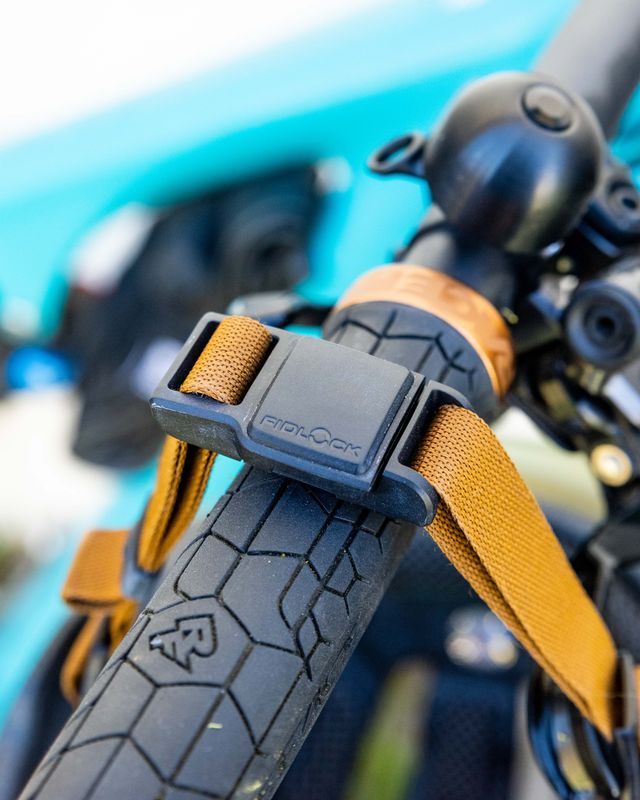
Fidlock Buckle
The magnetic Fidlock buckle connects quickly and easily.
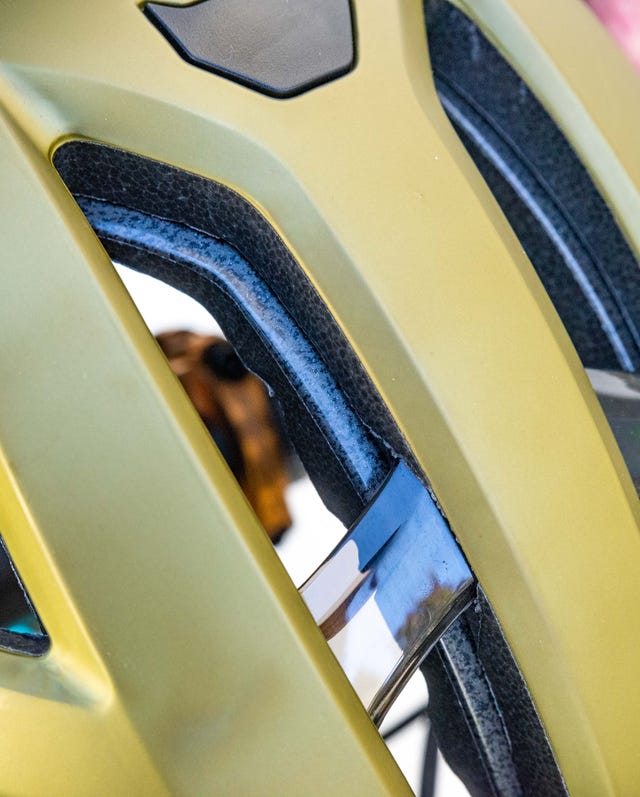
The Manifest has a softer inner shell, and a harder outer shell.
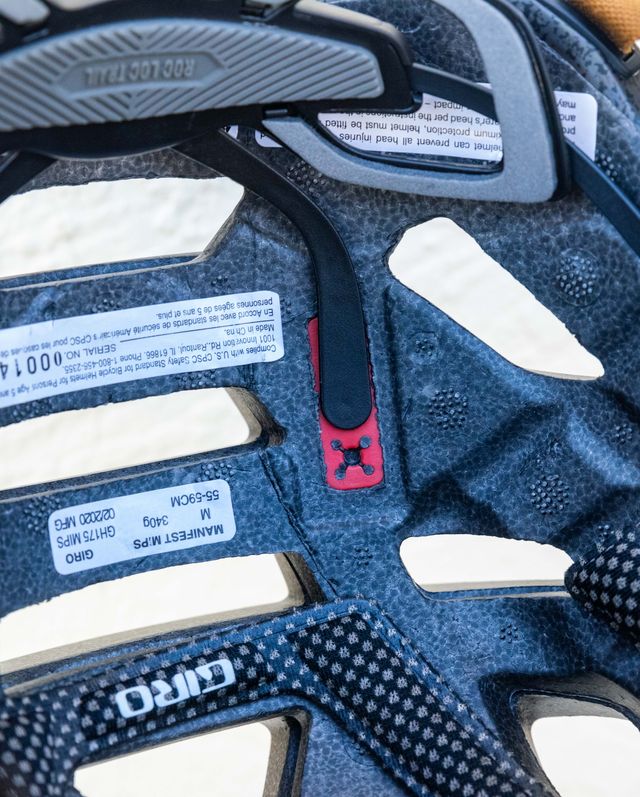
Height Adjustment
Three height positions for the Roc Loc fit system.
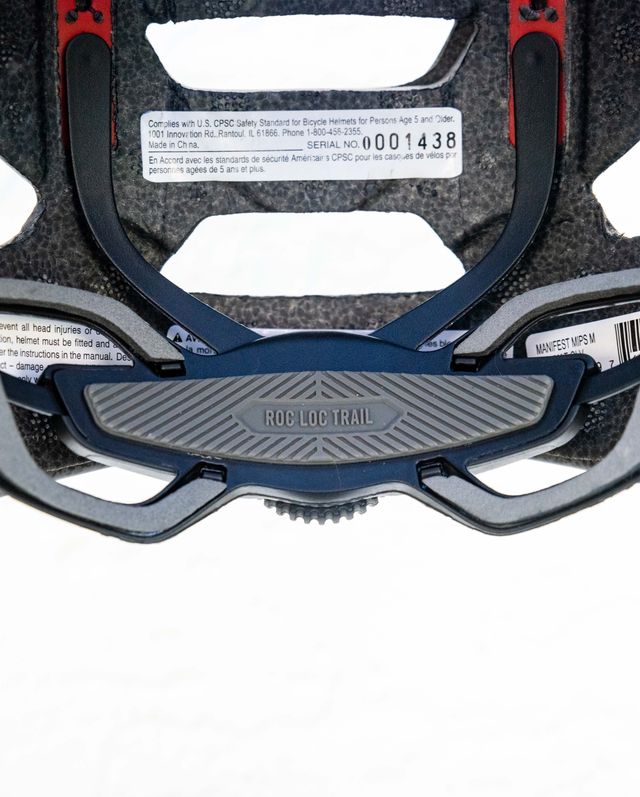
Padded Roc Loc
Padding on the occipital gripper enhances comfort.
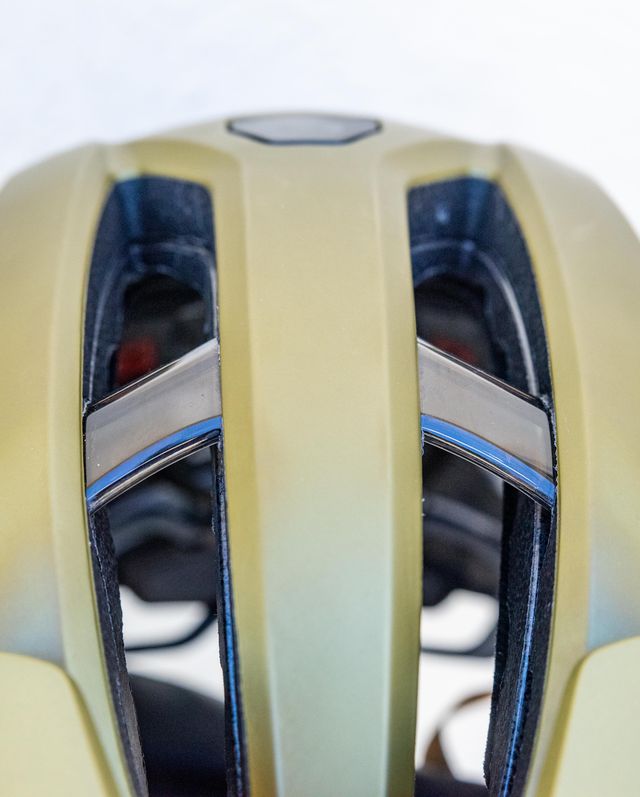
Reinforcement
A polyamide reinforcing ring improves structural integrity in a crash.
New Levels of Comfort, Cooling, and (Maybe?) Protection
Despite the clunky name, the Spherical technology is very good. It replaces the familiar plastic MIPS liner inside the helmet with a design consisting of two nested and linked shells—Giro calls it “ball-and-socket”—that can move independently. The concept is the same as a MIPS liner—a slip plane redirects energy in some impacts to reduce impact forces—but the slip plane no longer sits inside the helmet against your head. It’s now hidden between the two shells.
This gets rid of the plastic liner, which can snag your hair and squeak annoyingly, and allows Giro to use a different foam density for each shell. The outer shell is a higher density foam, which performs better (than lower-density foam) in high-speed impacts. The inner shell employs a lower density foam that protects better in lower-speed impacts.
The Manifest’s outer shell employs a polyamide reinforcing ring, which improves the helmet’s structural integrity in an impact, Giro says. That added strength allowed Giro to create larger vents for better cooling while still passing necessary safety tests, said Dain Zaffke, Giro’s marketing director.
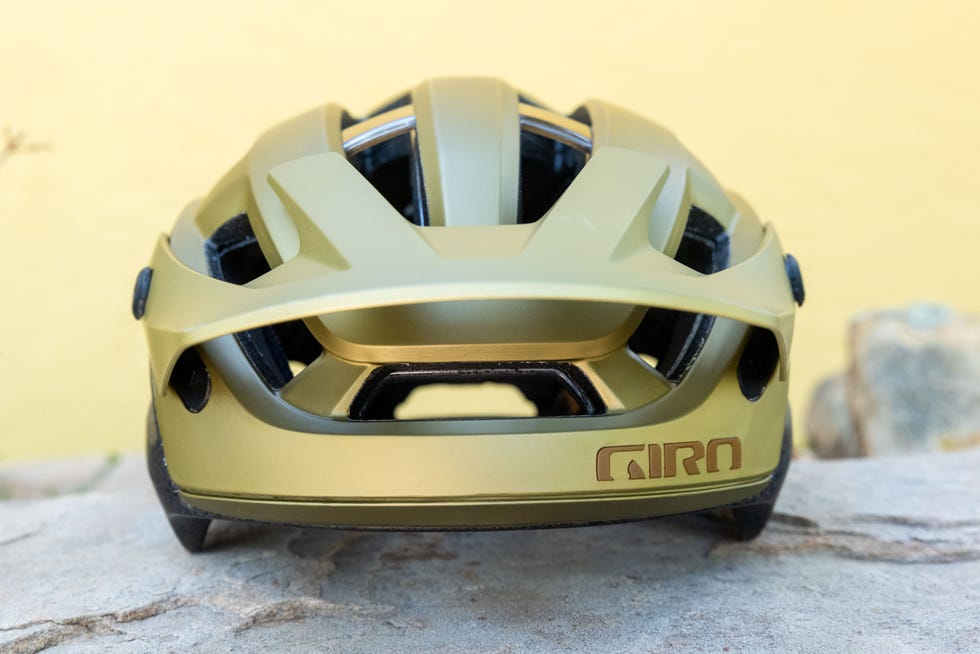
A harder question to answer is whether Spherical tech is demonstrably “safer” than traditional MIPS? It’s difficult to test (not a lot of humans are lining up to have their brains monitored during simulated crashes), and just as hard for brands like Giro to answer without getting in legal hot water.
Here’s what Giro’s spokesperson Peter Nicholson told me when I asked, “Spherical allows [Giro] to create a helmet that meet or exceeds all their internal testing, MIPS’s internal testing, and relevant certification standards while being lighter, cooler, and more comfortable than a helmet with a plastic MIPS liner.”
Giro submitted a Manifest for evaluation by Virginia Tech , which conducts leading helmet evaluations. The score and rating are not yet available (we’ll update this piece when they are), but Nicholson said, “It’s our understanding it did very well.”
A Very Impressive Helmet
I’ve been riding in a Manifest since early January, giving time to evaluate it and compare it with other trail helmets. It is a very impressive helmet, as it should be for the price.
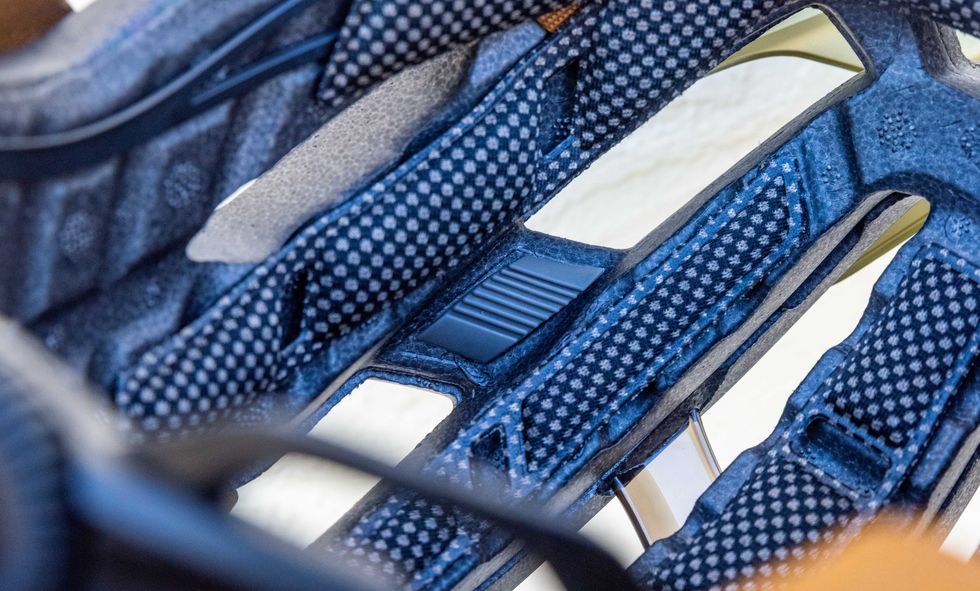
The ventilation is no joke. Air flow is noticeable even at lower speeds, which is not something I can say about almost any other helmet. At trail speeds, the air flow is certifiably remarkable. Even when speeds aren’t high enough to generate flow, the Manifest breathes very well, with no sensation of hot air trapped against the skull. I’m the guy on the ride sweating before anyone else; I’m the guy who at the top of the climb looks like he rode through a rainstorm when everyone else looks dewy. Good ventilation is something I’m attuned to and prize and the Manifest is the best ventilated mountain bike helmet I’ve ever sampled.
On the subject of comfort, the Manifest also scores extremely high with me. It is almost luxurious—the plush padding feels nice on the skin, there’s a nicely padded occipital gripper unit, and smooth, supple straps. The magnetic Fidlock buckle is simple, fast, and secure, and the fit system’s dial is easy to find and adjust. The Manifest also works well with a variety of eyewear, with good clearance for models with different temple sizes and shapes. Add in its light weight and cooling power, and you have a very nice helmet in which to spend a lot of time.
I should note that I have a Giro-shaped head, so its helmets almost always fit me well. If you’ve tried on a Giro recently and it didn’t fit you, the Manifest probably won’t either.

But Not 100 Percent Perfect
The Manifest is not perfect—no product is—and I did run into a few things I didn’t love. The Manifest isn’t a great helmet for stashing eyewear in its vents, even though it was made to accommodate sunglasses up there. I also sampled the Manifest with goggles—there is an integrated strap gripper—and found that goggles with larger frames like Giro’s Blok are too large to stash under the visor, but medium-frame (and smaller) goggles dock well.
I found the visor a bit short for my conditions in southwest Colorado (lots of sun, lots of open sky). If the sun was anywhere but directly overhead, the Manifest’s visor doesn’t offer much coverage. To be fair, I have this issue with many visors. The reality is visor size and shape are driven at least as much—and probably more—by style than they are by function. The Manifest is positioned as a lightweight trail helmet, and that dictates a sleek shape—it won’t get a honkin’ enduro-sized visor.
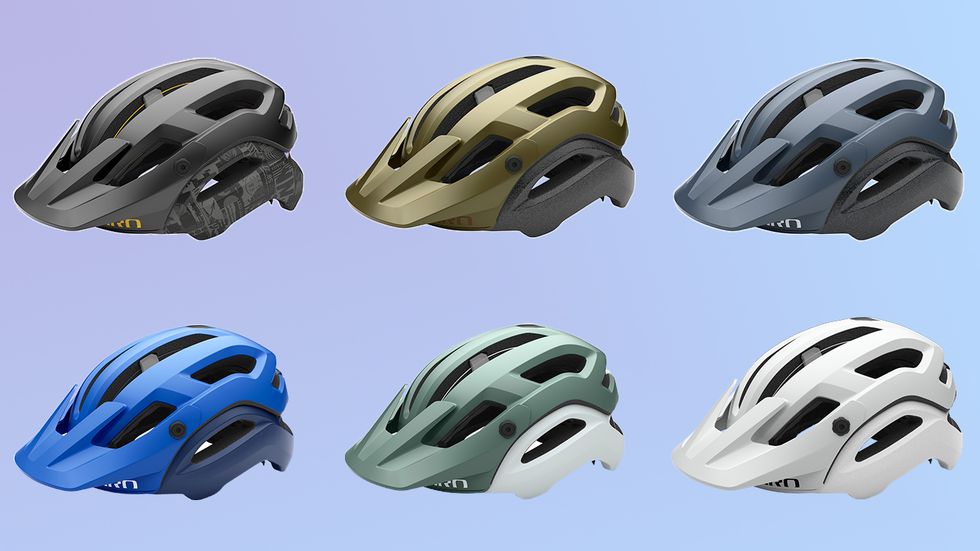
A note: The Manifest does not have an integrated mounting system. Giro considered one but, “[We] found that pro riders using Switchblade and Montaro, both with camera mounts, ended up choosing a different spot for their cameras at least half the time,” Nicholson said.
Since I began testing the Manifest in January, I’ve been able to compare it to other popular mountain bike helmets. There’s no question the Manifest is very expensive—though it is $40 less than Bontrager’s Blaze WaveCel —and there is a long list of very good helmets that cost much less than a Manifest. But the Manifest’s comfort and cooling is currently unmatched—this is a superb helmet. If it fits, and you’re willing to pay for it, you’ll love this helmet.
Giro Manifest Spherical

A gear editor for his entire career, Matt’s journey to becoming a leading cycling tech journalist started in 1995, and he’s been at it ever since; likely riding more cycling equipment than anyone on the planet along the way. Previous to his time with Bicycling , Matt worked in bike shops as a service manager, mechanic, and sales person. Based in Durango, Colorado, he enjoys riding and testing any and all kinds of bikes, so you’re just as likely to see him on a road bike dressed in Lycra at a Tuesday night worlds ride as you are to find him dressed in a full face helmet and pads riding a bike park on an enduro bike. He doesn’t race often, but he’s game for anything; having entered road races, criteriums, trials competitions, dual slalom, downhill races, enduros, stage races, short track, time trials, and gran fondos. Next up on his to-do list: a multi day bikepacking trip, and an e-bike race.

.css-1t6om3g:before{width:1.75rem;height:1.75rem;margin:0 0.625rem -0.125rem 0;content:'';display:inline-block;-webkit-background-size:1.25rem;background-size:1.25rem;background-color:#F8D811;color:#000;background-repeat:no-repeat;-webkit-background-position:center;background-position:center;}.loaded .css-1t6om3g:before{background-image:url(/_assets/design-tokens/bicycling/static/images/chevron-design-element.c42d609.svg);} Bike Helmets
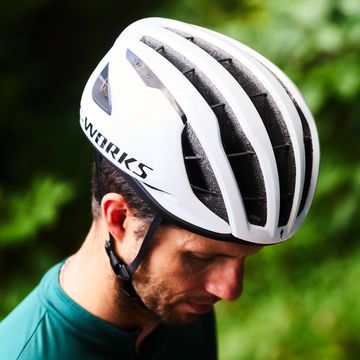
It’s Okay If You Don’t Wear a Bike Helmet
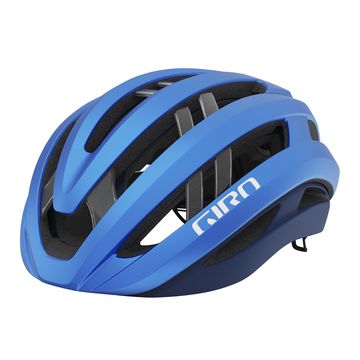
First Look: The Giro Aries Road Helmet
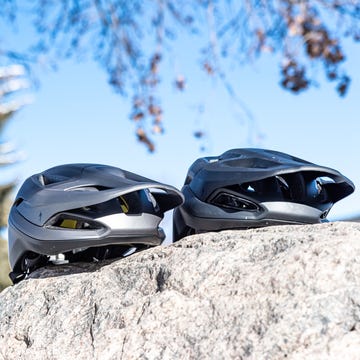
Specialized Ambush 2 and Camber Helmets Reviewed
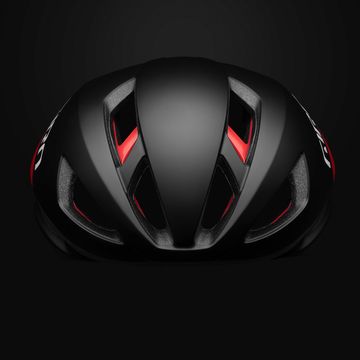
The Giro Eclipse Aero Road Helmet is Finally Here

Why You Should Rock a Helmet Mirror When Riding
Should Helmets Have Expiration Dates?
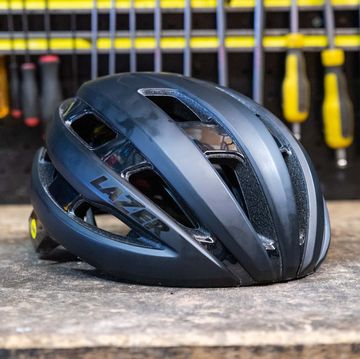
Tested: Lazer's New Sphere MIPS Road Helmet
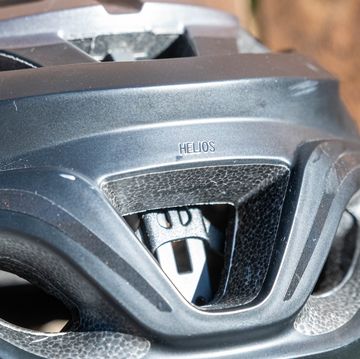
Giro Helios: Light and Aero with Spherical Tech
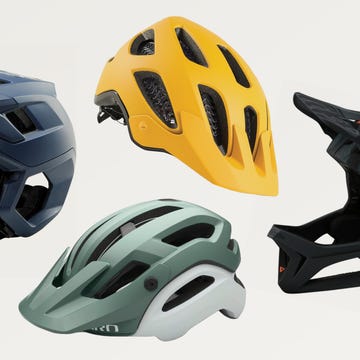
Best Mountain Bike Helmets
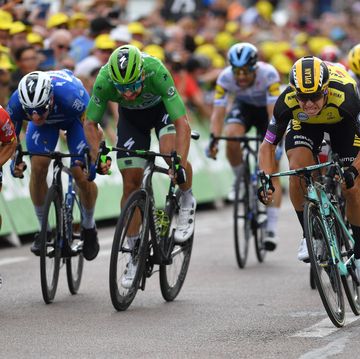
The Fastest Helmets of The Tour de France
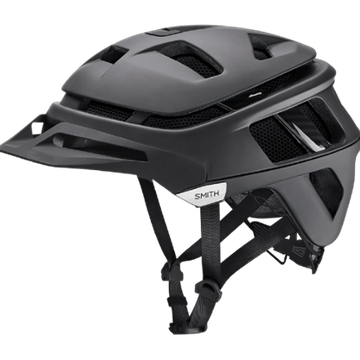
REI Offers the Smith Forefront Helmet for 50% Off
Wind Tunnels, Track Tests: Making of the ‘Air Attack’
Share this:.
- Click to share on Facebook (Opens in new window)
- Click to email a link to a friend (Opens in new window)
The Ironman, the Tour de France, Olympic track racing… the Air Attack from Giro is a helmet that over the past year has seen adoption at the top levels of the sport. We caught up with an insider, Rob Wesson of Giro’s R&D team, for some insight on the origins of this out-of-box helmet design. —Stephen Regenold
Gear Junkie: The Air Attack has a unique look for an “aero” helmet. Where did the idea come from?
Rob Wesson: There’s a trend that started a couple years ago of more aero road frames, skin-suits for road racing, and everyone was looking for small gains. Giro had experience from its TT helmets, but we wanted to build something that was made not for the guy in a tuck for 40 miles but more multi-use, for road racing, track, triathlon, and more.
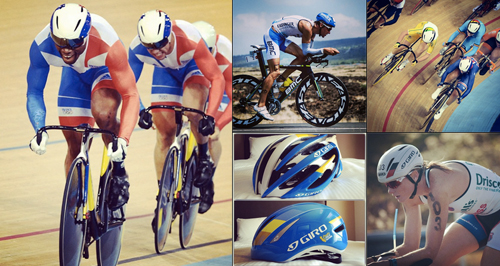
Tell us about the R&D process.
There are six core people on the R&D team. We started not by talking with our industrial designers at Giro but with engineering. This was the opposite of what the process usually is. But aerodynamics was our top priority. We started at a wind tunnel and brought 40 helmet types to see how they would compare. We just started playing with shapes. That was early 2011.
( RELATED CONTENT : GearJunkie covered the Giro Air Attack bike helmet last month in a “first look” test post . )
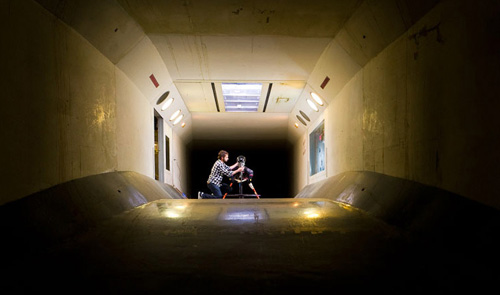
What was the reaction to the shape of the Air Attack at first?
It was a head turner. There was nothing like it. We’ve now been looking at it for 2.5 years. At first we were uncomfortable with the shape because we were so used to aero helmets having a tail.
Another thing, before the Air Attack, road helmets were all looking pretty much alike. We wanted to do something different with this one. Giro has always lead helmet design since our beginning and we get copied a lot. It’s not that our helmets started looking like everyone else’s, but rather everyone else’s starting looking like ours.

Why eliminate the “tail” from the aero design?
I remember the second big test in the wind tunnel. We put a shape on that was very round and measured its aerodynamic qualities. I remember thinking “Why is it doing so well?” So we started playing with clay on the prototype helmets and after a lot of trial and error came to this design, which has the more unlikely rounded back.
How does it work?
The front is very similar to a traditional TT helmet. Air flows almost the same around the front as with a TT model. Compared to a regular road helmet, there are less vents, which give fewer areas for air to catch. The smooth, rounded back also helps reduce drag by not tripping up the air flow as much as a standard road helmet
What are the results?
On a 40-kilometer TT race you can save 17 seconds we found [compared to a traditional road helmet]. But then if you wear Giro’s Aero TT helmet you gain about 30 seconds.

So why would you wear the Air Attack versus a TT?
The Air Attack is not as fast as a TT helmet in a wind tunnel test. But it can be faster in a…
interview continued on next page. . .
Follow Us On

Subscribe Now
Get adventure news and gear reviews in your inbox!
Join Our GearJunkie Newsletter
Gear Top Stories Deals
2-FOR-1 GA TICKETS WITH OUTSIDE+
Don’t miss Thundercat, Fleet Foxes, and more at the Outside Festival.
GET TICKETS
BEST WEEK EVER
Try out unlimited access with 7 days of Outside+ for free.
Start Your Free Trial
Powered by Outside
What’s that new Giro helmet in the Tour?
After outfitting sponsored teams with new time trial helmets last week, giro used the first mountain stages of this year’s tour to unveil a new road helmet as well. unlike the tt helmet, which has yet to be named, priced, or slated for release to the public, the new giro prolight is already in the pipeline for retailers this coming spring. giro prolight – less is more.
Heading out the door? Read this article on the new Outside+ app available now on iOS devices for members! >","name":"in-content-cta","type":"link"}}'>Download the app .

After outfitting sponsored teams with new time trial helmets last week, Giro used the first mountain stages of this year’s Tour to unveil a new road helmet as well. Unlike the TT helmet, which has yet to be named, priced, or slated for release to the public, the new Giro Prolight is already in the pipeline for retailers this coming spring.
Giro Prolight – less is more
With the Prolight, Giro smashes through the previous weight floor, dropping below 200 grams for the first time in a production helmet. In fact, the 175-gram (claimed) weight for the European version is reportedly the lightest helmet ever made.
Giro says that the helmet was two years in development, and rather than looking for ways to add features to existing helmets, they looked for ways to pare down. The goal was to retain key elements but simplify them into lighter structures.

“This was a ground-up, no compromise project,” Giro VP of Research and Development Mike Lowe said. “Our primary objective was to build the lightest helmet in the world, but we also wanted to make sure it was very well ventilated and super comfortable.”
So how’d they do it?
For one, Giro rethought their trademark Roc Loc fit system. The new version, called Roc Loc SL, is self-adjusting, made from lightweight and supple webbing material. The rider can adjust it to fit in one step, and after that, it appears to essentially work like an elastic band around the occipital lobe (rather than the more rigid plastic of the original Roc Loc). For additional refinement to the fit, the Roc Loc SL can be secured to the helmet shell in three different positions fore or aft.

Helmet straps on the Prolight were also subjected to the diet treatment. Giro sourced Italian-made webbing that is lighter weight but sacrifices no comfort.
Obviously the shell of a helmet is its foundation, and the new lid has 25 vents plus internal channels to help boost airflow. In photos, the Prolight vents appear smaller than those on the previous top-of-the-range Ionos. But the company says that the internal channels, plus large vents at the back of the helmet, draw air through it to maintain ventilation.
Other trademark Giro features like X-static pads, “In-Mold” construction, and “Superfit” sizing return from previous helmet generations.

Who’s on it, and when can WE get one?
So far, Giro sponsored teams Astana, Garmin-Slipstream, Caisse d’Epargne, and Rabobank are riding the new helmet. According to Giro, Levi Leipheimer calls the Prolight “unreal,” and others liken the reduced weight to wearing nothing more than a baseball hat.
Giro says the Prolight will be on shelves this spring, in three sizes (small, medium, large) and four color combinations (white/silver, black/carbon, blue/black and red/black). Pricing has not been released. According to brand manager Kevin Franks, the US-available version (CPSC-certified) will be slightly heavier than the CE (European) version, at about 200 grams in size medium.
Photo Gallery

Popular on Velo
>", "path": "https://velo.outsideonline.com/road/road-gear/xpedo-new-power-sonik-omni-and-thrust-omni-meter-pedals-sea-otter-classic/", "listing_type": "recirc", "location": "list", "title": "xpedo’s new power meter pedals are ready for the spotlight"}}'> xpedo’s new power meter pedals are ready for the spotlight, >", "path": "https://velo.outsideonline.com/gravel/gravel-racing/results-brennan-wertz-and-cassia-boglio-win-sea-otter-gravel-race/", "listing_type": "recirc", "location": "list", "title": "results: brennan wertz and cassia boglio win sea otter gravel race"}}'> results: brennan wertz and cassia boglio win sea otter gravel race, >", "path": "https://velo.outsideonline.com/road/road-racing/that-i-havent-won-yet-is-a-shame-demi-vollering-chasing-repeat-victory-in-liege-bastogne-liege/", "listing_type": "recirc", "location": "list", "title": "“that i haven’t won yet is a shame”: demi vollering chasing repeat victory in liège-bastogne-liège"}}'> “that i haven’t won yet is a shame”: demi vollering chasing repeat victory in liège-bastogne-liège, >", "path": "https://velo.outsideonline.com/road/road-gear/spotted-leaked-forgebond-road-wheelset-sea-otter-classic/", "listing_type": "recirc", "location": "list", "title": "spotted: leaked forge+bond road wheelset at the sea otter classic"}}'> spotted: leaked forge+bond road wheelset at the sea otter classic.
- Spring Classics

Giro is a manufacturer of helmets, shoes, and apparel, founded by Jim Gentes in 1985 and based in California.

- Headquarters Scotts Valley, California
- CEO Eric Nyman
- Founded 1985
- Website https://www.giro.com/
Giro was born in 1985, when Jim Gentes, an industrial designer and bike racer from California, found himself frustrated at the quality and style of cycling helmets. Not yet mandatory in professional racing, there was little attention being paid to weight, aerodynamics and, just as importantly, what looked and felt good.
Gentes made the most of his scientific knowledge and connections to establish Giro as a pioneer in the advancement of helmet design. He collaborated with NASA scientists to take airfoil technology used in World War II fighter jets and adapt it for use in an aerodynamic helmet shape for triathletes. The following year, Gentes took a prototype of a lightweight, high-performance road cycling helmet to a bike show in Long Beach Bike Show, came back with $100,000 in orders, and the company took off from there.
After more innovations in aerodnyamics, which saw Greg LeMond famously time trial to 1989 Tour de France victory wearing an Aerohead helmet, the company set about refining various safety features, launching a first full-face lid for mountain bikers.
Giro was acquired by Bell Sports - a fellow manufacturer of helmets - in 1996, and the 2000s would see a diversification in the brand’s product range. As well as moving into snowsports, it manufactured its first pair of cycling gloves in 2008 and would branch out into cycling apparel five years later. In between came its first foray into footwear, with shoes now the most significant aspect of its cycling offering behind helmets.
BRG Sports - as Bell became known through other mergers - was acquired by Vista Outdoor in 2016 and Giro continues to operate out of Santa Cruz.
Did you know?
Giro’s headquarters is home to around 50 different testing fixtures. One is a crash test dummy named Brad - essentially a massive piston with a model head, who is sent smashing into metal blocks on a daily basis.
Pro cycling
Team sponsorships: Canyon-SRAM, USA Track Team, Miami Blazers, LA Sweat. Athlete sponsorships: Geraint Thomas, Thibaut Pinot, Keegan Swenson, Mathias Flückiger, Alice Towers, Alex Morrice, Agnieszka Skalniak-Sojka, Griffin Easter, Haley Smith, Hannah Otto, Lars Forster, Luke Wiedmann, Vital Albin, Tobin Ortenblad, among others.
- The pioneering Prolight helmet - Giro’s first dedicated road cycling performance helmet is still regarded as a game-changer. Previously, helmets had been cumbersome and ugly, but the Prolight was constructed from EPS foam, making it lightweight while also drawing on Gentes’ first experiments with aerodynamic design, and incorporating ventilation properties for good measure. This was absolutely the making of Giro as a brand.
- LeMond wins 1989 Tour de France - Giro had a hand in one of the most iconic moments in Tour de France history. The final time trial of the 1989 Tour is the stuff of legend, with Greg LeMond going full aero to snatch the yellow jersey from Laurent Fignon by eight seconds. As well as a revolutionary pair of aero bars, LeMond was sporting an Aerohead helmet, at a time when helmets were not compulsory and his rival set out with hair flapping in the wind.
- Giro's first shoes - The most significant of Giro’s expansion came in 2010, when they dived into the cycling shoes market. They’d already started making gloves, but shoes are now a major part of the business, worn by leading pros in the world’s biggest races. 2010 saw the launch of a seven-shoe line, four for the road - with the flagship model taking the Prolight moniker - and three for mountain biking.
- Leipheimer wins Leadville in Code shoes - Levi Leipheimer was one of Giro’s key ambassadors and, after he tested Giro’s new road shoes in the Tour de France - he was given a pair of the new Code MTB shoes three days ahead of Leadville 100, and proceeded to set a course record.
- Vos wins Olympic gold - Giro reinvented its AirAttack in 2012, with a rounded aerodynamic profile with minimal venting. The helmet was ridden to Olympic glory that year by Marianne Vos in London.
- Double gold in Rio - Greg Van Avermaet and Anna van der Breggen both wear Giro Synth helmets to win the road race gold medals at the 2016 Olympics.
Top Giro Stories
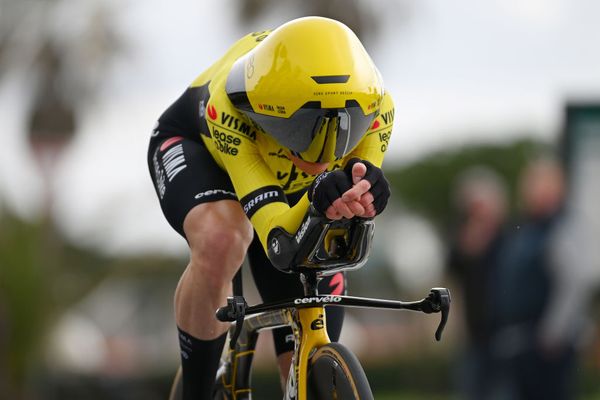
UCI approves Visma-Lease a Bike’s striking new helmet
For a second time, the sport's governing body has approved the Giro Aerohead II
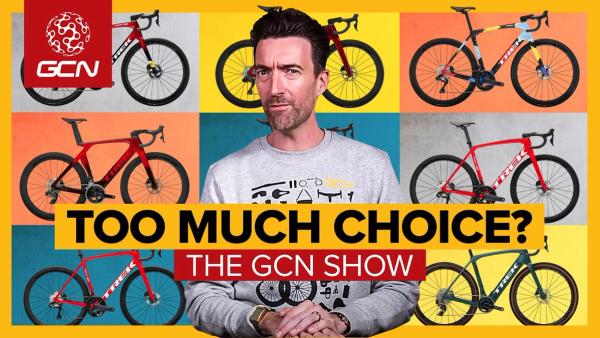
Has bike tech become too complicated for its own good? - The GCN Show
Dan Lloyd and Si Richardson react to the news that Trek is slimming down its options and question whether more brands should follow its lead
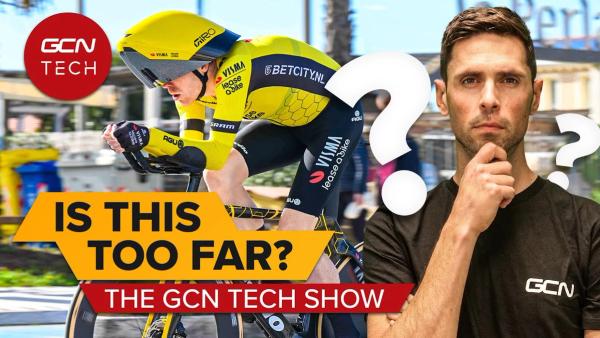
Have the new super aero time trial helmets gone too far? GCN Tech Show
Alex Paton and Ollie Bridgewood return to discuss what proved to be a controversial week in the world of bike tech
Featured Video

What Type Of Bike Helmet Should You Buy?
Helmets are an important piece of safety equipment, but with so many different styles with so many different features at so many different price points, how can you know what helmet is right for you? ____________________ 🚴 With the 2022 road season promising to be one of the most exciting in recent memory, subscribe to GCN+ for live racing all year round, exclusive shows & cycling adventure films: https://gcn.eu/plus Download the GCN App 📲 for FREE & be part of the world's largest cycling community: https://gcn.eu/app Join thousands of other cycling fans in receiving our free weekly ✉️ newsletter roundup, including news, competitions and discounts: https://gcn.eu/3K7
Subscribe to the GCN Newsletter
Get the latest, most entertaining and best informed news, reviews, challenges, insights, analysis, competitions and offers - straight to your inbox
NEW! YOUR LOCAL RUNNING DROP
Get after it with nearby recommendations just for you.
BEST WEEK EVER
Try out unlimited access with 7 days of Outside+ for free.
Start Your Free Trial
Powered by Outside
(Re) Introducing The Giro Aerohead Helmet
After almost a 30-year hiatus, giro welcomes two new iterations of the aerohead: the aerohead ultimate mips and aerohead mips..
New perk! Get after it with local recommendations just for you. Discover nearby events, routes out your door, and hidden gems when you >","name":"in-content-cta","type":"link"}}'>sign up for the Local Running Drop .
Originally worn by Greg Lemond at the 1989 Tour de France, the Giro Aerohead has a legacy as the first popular aero helmet in cycling. After almost a 30-year hiatus, Giro welcomes two new iterations of the Aerohead: the Aerohead Ultimate MIPS and Aerohead MIPS. While the two models are different, they do share multiple features, including implementation of MIPS. MIPS is a helmet add-on that allows a helmet to slide relative to the rider’s head, adding protection from angled impacts. Giro has chosen to implement this technology into an aero helmet as they tend to be worn in times of fast speeds, sub-par handling bikes, and situations where riders take more chances. Another feature shared by both helmets is the Zeiss Optics wrap-around eye shield. This shield magnetically attaches to the helmet, and wraps all the way around to the riders’ ears, making it fast aerodynamically and easy to put on.
Originally only planned to be released to pro-tour cyclists, the Aerohead Ultimate MIPS is the true pinnacle of aerodynamics at Giro. Developed in the wind tunnel, tested on the track, and already proven by grand tour riders, the Ultimate is fast. One of the ways it’s so fast is through Giro’s implementation of Textreme carbon fiber in the shell. With the use of Textreme, Giro was able to lessen the frontal area of the helmet, due to it being much stronger than traditional carbon fiber (or other materials). In the tunnel is where the Ultimate really shines, coming in at nearly 48 seconds (17 watts) faster over an Ironman than Giro’s own Advantage, and 20 seconds (7 watts) faster than their already speedy Selector. Giro also tested the Ultimate thermodynamically, which resulted in it being 22.3% hotter than their aero-road helmet the Air Attack, 5% hotter than the Selector, and 8% hotter than its little brother the Aerohead MIPS.
RELATED: Giro Air Attack Shield Helmet Review
While Giro designed the Aerohead Ultimate MIPS to be the fastest helmet possible, they decided that the MIPS version should be more affordable, cooler, and still nearly as fast. Made out of polycarbonate instead of Textreme carbon fiber, the MIPS model cuts costs, but also adds frontal area resulting in a slightly slower helmet. In the tunnel it tested 43 seconds (15 watts) faster over an Ironman than the Advantage, 14 seconds (5 watts) faster than the Selector, and only 5 seconds slower than the Ultimate. Where the Aerohead MIPS really shines is in the cooling arena. Thanks to its added vents, the MIPS comes in only 14% warmer than the Air Attack and 8% cooler than the Ultimate.
Both helmets will be available this fall in a variety of colors, with prices of $550 for the Ultimate MIPS and $250 for the MIPS.
RELATED – 2016 Triathlete Buyer’s Guide: Helmets
Popular on Triathlete

Join Outside+ to get access to exclusive content, 1,000s of training plans, and more.
Healthy Living
- Clean Eating
- Vegetarian Times
- Yoga Journal
- Fly Fishing Film Tour
- National Park Trips
- Warren Miller
- Fastest Known Time
- Trail Runner
- Women's Running
- Bicycle Retailer & Industry News
- FinisherPix
- Outside Events Cycling Series
- Outside Shop
© 2024 Outside Interactive, Inc
.sa_b_component_richtext_unique p { margin: 0; } .sa_b_component_richtext_unique img { max-width: 100%; margin-bottom: 20px; } .sa_b_component_richtext_unique table { max-width: 100%; min-height: 80px; margin-bottom: 20px; overflow: auto; } .sa_b_component_richtext_unique td { padding: 12px; } .sa_b_component_richtext_unique ul { margin-left: 20px; } .sa_b_component_richtext_unique ol { margin-left: 20px; } .sa_b_component_richtext_unique li::marker { font-size: 16px; } Contact Us: +86 13362892228 | [email protected]
Get A Quote
Tour de France: A Look at Top Bike Helmet Brands
The Tour de France is not just any cycling race - it's the pinnacle of cycling where the world's best cyclists compete for glory, and where the best cycling gear is put to the test. One of the most important pieces of gear for any cyclist is their helmet, which not only provides protection but also plays a crucial role in performance. It's the difference between a close call and a nasty spill, between a good day and a great one. That's why Huace Sports are excited to take a closer look at the helmets worn by professional cyclists in this year's Tour de France. As a bike helmet manufacturer, HuaceSports is committed to providing cyclists with top-of-the-line helmets that not only provide superior protection but also enhance their performance. Our team of designers and engineers are constantly working to improve our helmets, incorporating the latest technology and innovations to ensure that our helmets are among the best on the market. We're proud to be a part of the cycling community and to contribute to the safety and performance of cyclists around the world. So, whether you're a professional cyclist or a weekend warrior, make sure you're using the best gear to achieve your goals and stay safe on the road.
In this post, we'll explore some of the popular brands and models that have made their way onto the heads of professional cyclists, and the technology and innovation that sets them apart. So, whether you're a seasoned cyclist or simply a fan of the sport, read on to discover the Tour de France's top cycling helmets.
Ekoi tour de france helmets
Ekoi is the most commonly found helmet manufacturer in this year's Tour de France, supporting no less than four teams representing the French brand. They are also a long-termed working partner with HuaceSports, a bike helmet manufacturer dedicated to details and design. Their AR14 helmet is the one that most riders have opted for, with its aerodynamic design paired with small vents up-front for breathability. The AR14 was worn by Caleb Ewan in that stage 3 crash, as well as by stage 4's breakaway nearly man, Brent van Moer of Lotto Soudal. EKOI continues to support professional cycling teams and athletes, including Warren Barguil of Team Arkéa Samsic. As one of the best French climbers, Barguil trusts the EKOI AR14 and EKOI GARA helmets to protect him during intense competitions. This was evident in his impressive win at the 2022 Gran Premio Miguel Indurain and 1st place finish in the 5th stage of the Tirreno-Adriatico. As the Tour de France approaches in 2023, we can expect to see more EKOI gear on display as top riders rely on the brand's quality and performance to give them an edge in the world's most prestigious cycling event. Ekoi's Gara and Legende helmets have also been seen on professional cyclists in the race. The Legende replicates the retro hairnet style with modern and safe materials, while the Gara features a streamlined design for optimal performance.
Souce: Cyclingnews
HJC is a Korean brand that has recently entered the cycling market and gained the sponsorship of professional cyclists such as Chris Froome who claims to take part in the 2023 Tour de France and Greg Van Avermaet. And same as Ekoi, HJC is also a long termed partner with Huacesports who provide cyclists with top-of-the-line helmets that meet their needs. Most of the team has been using the IBEX 2.0, but for maximum aerodynamics, riders have been switching to the Furion 2.0. On time trial days, riders switch to the Adwatt, which offers maximum aerodynamics and ventilation for optimal performance.

Kask is an Italian brand that has gained significant popularity in the Tour de France in recent years. Their helmets are known for their lightweight and comfortable design, which provides excellent ventilation and superior protection. KASK has a long-standing association with the Tour de France, and for the 2022 race, the brand has unveiled its limited edition Valegro Tour de France helmet. This helmet features a unique graphic, with seven parallel yellow lines that represent the seven Tour victories achieved by KASK riders. Only 3,328 pieces of this special helmet have been produced, with each helmet bearing a progressive number at the back to signify a cyclist's personal kilometre of the 2022 race.
Specialized

Specialized is a leading brand in the cycling industry, known for its high-quality helmets that are designed to offer maximum comfort and safety. Specialized helmets have become a staple in the Tour de France with their exclusive use by Specialized-sponsored teams in recent years. The teams riding Specialized bikes also use their helmets, shoes, tires, and wheels, such as the Roval. Fans of the race have seen the current Road World Champion, Julian Alaphilippe, lighting up the race in the S-Works Prevail 2 while Peter Sagan, a three-time champion, will be donning the S-Works Evade. The S-Works Prevail 2 is known for its regular fit, while the S-Works Evade is aerodynamic. The teams wearing these helmets in the 2022 tour de France race include BORA Hansgrohe, QuickStep Alpha Vinyl Team, and Total Energies. Fans can get their hands on these helmets at Competitive Cyclist and Jenson USA.

Giro is another popular brand that has been present in the Tour de France for many years. Their helmets are a well-known brand among the pro peloton, with a history dating back to pre-2000. This year, three teams in the 2022 Tour de France will be wearing Giro helmets, including Groupama-FDJ. Cyclists will have the option to choose from three Giro helmets; the Giro Aether Spherical, Giro Vanquish MIPS, and Giro Aerohead MIPS helmets. The Giro Aerohead MIPS helmet will be used by Trek-Segafredo riders for time trials as their helmet supplier, Bontrager, does not produce a TT helmet.

POC tour de france helmets
POC is a Swedish brand that has revolutionized bike helmets with their patented SPIN safety technology. The unique light blue liner in all POC helmets today is indicative of the SPIN system which protects riders against rotational forces in the event of an impact. Their helmets are also among the most stylish in the pro peloton and this year, the EF Education Nippo team will be sporting the pink POC Ventral SPIN Air helmets. These helmets feature an aerodynamic design and are sure to catch the eye of spectators watching the Tour de France.

Bell is an iconic brand in the cycling industry, with over 60 years of experience in crafting high-quality helmets that are built to last. Their helmets are renowned for their durability and superior construction, making them a popular choice among cyclists. In the 2021 Tour de France, the Bell Z20 was a top pick among riders, thanks to its aerodynamic design that delivers exceptional performance in any condition. Its advanced ventilation system keeps cyclists cool and comfortable during long rides. It's unfortunate to note that Bell helmets did not make an appearance in the 2022 Tour de France, leaving fans and riders alike to wonder what happened to this classic brand.
The 2022 Tour de France showcases a total of 16 different bike helmet brands. The top two helmet brands with the most presence in the race are Ekoi and Specialized with three teams each, followed by Abus and HJC with two teams. Bell, a classic brand that has been present in the race for over 60 years, did not show up in the race this year. It is interesting to note that some of the teams choose to wear helmets from brands other than their bike sponsor's brand.
2022 bike helmet brands present at the Tour de France

In Conlusion
In conclusion, the Tour de France continues to push the boundaries of cycling technology, and the helmets worn by the pros are no exception. With the constant evolution of aerodynamics, ventilation, and safety features, it's no wonder that helmet brands are eager to showcase their products in the race. As fans and spectators, we can appreciate the commitment of the teams and riders to the sport, as well as the dedication of the helmet manufacturers to push the limits of helmet technology. Ultimately, the Tour de France is an exciting and inspiring display of the best cycling has to offer, and we can't wait to see what the future holds for helmet innovation in the race.
- Sign in / Register
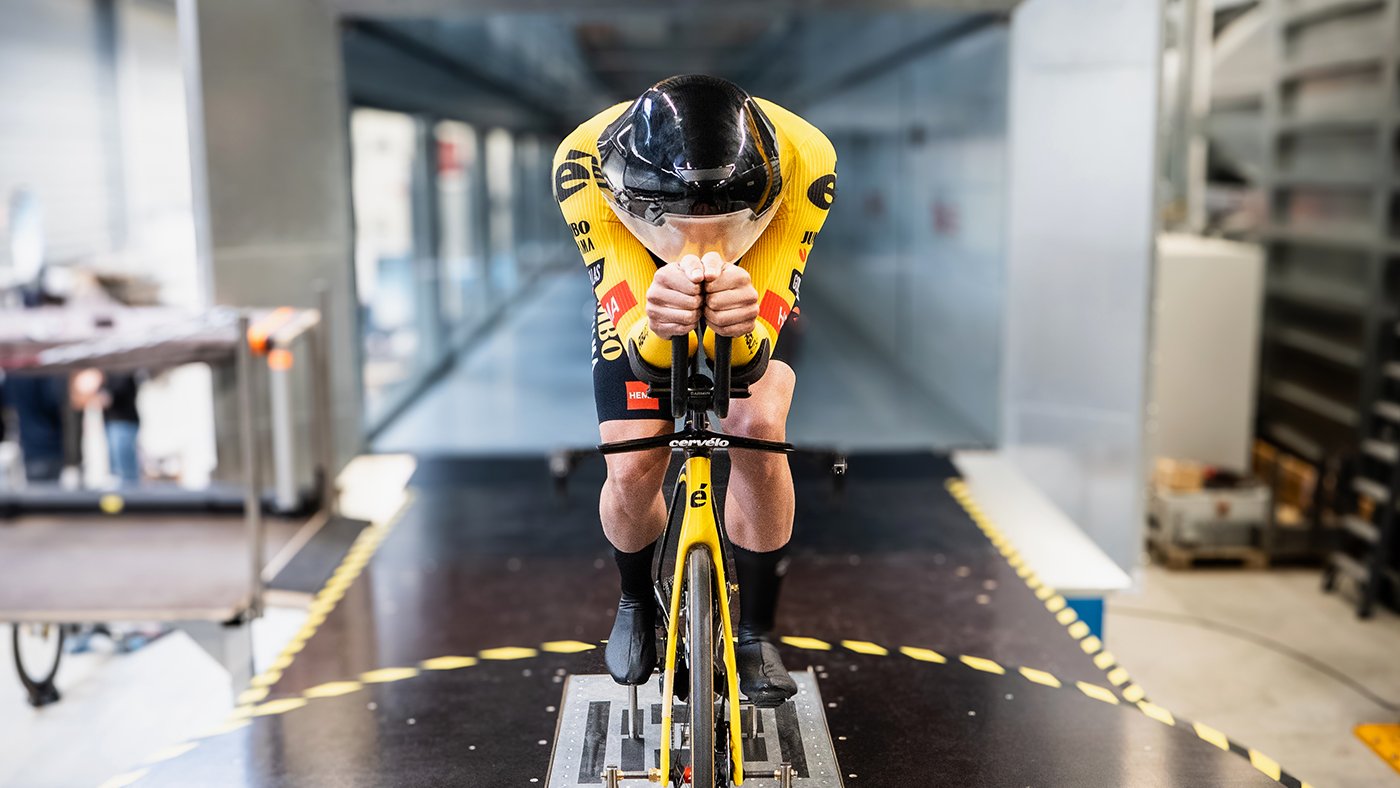
Designing Speed: Aerohead II
The first Giro Sport Design was called the Advantage. It helped riders cheat the wind by blurring the lines between equipment and bodies. In 1986, Giro helped a young American win the Tour de France by a mere 8 seconds in the first Aerohead. The quest to engineer speed continues with Aerohead II and our partners, Team Visma | Lease a Bike.
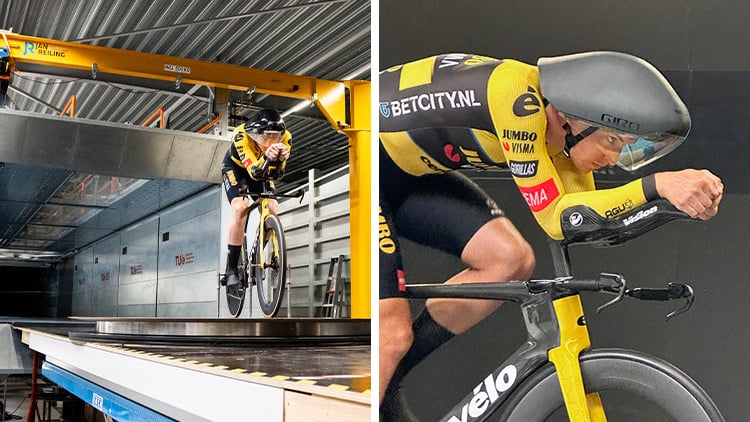
“It’s truly a dream to develop a helmet with Giro. It really gives us confidence as a team to know that together we have created the fastest helmet possible. When I was a young rider, my idols wore Giro helmets - I can’t believe now I get my turn.”
- Jonas Vingegaard, 2x Tour de France Winner
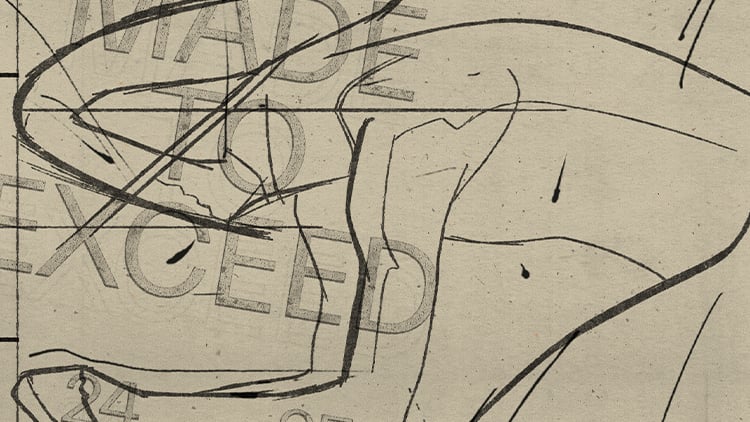
“When we began discussions with Visma | Lease a Bike, their meticulous attention to progressing the technical side of the sport immediately resonated with us. We knew this was the right team to collaborate with and design our fastest time trial helmet ever.”
- Warren Gravely, VP of Merchandising
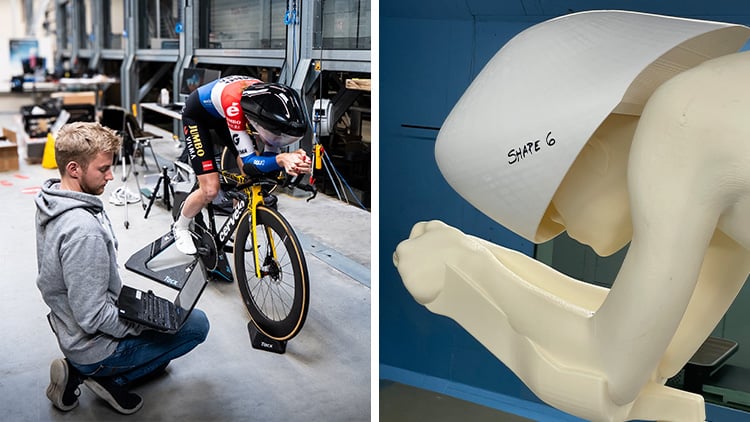
“I’ve dreamed of the fastest helmet ever. It was incredible to work for months and months on Aerohead II, gathering data and measurements from the team, pushing right to the limits of UCI regulations. To finally be able to go to the wind tunnel in Eindhoven, put one on Jonas, and see the numbers that proved we’d succeeded was truly special. And of course, then we pushed the design even further, because that’s what Giro does.”
- Ash Lewin, Industrial Designer
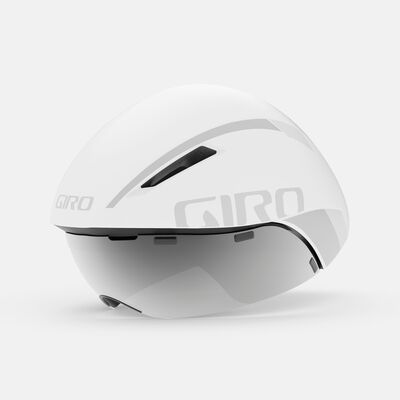
Aerohead Mips Helmet

Eclipse Spherical Helmet
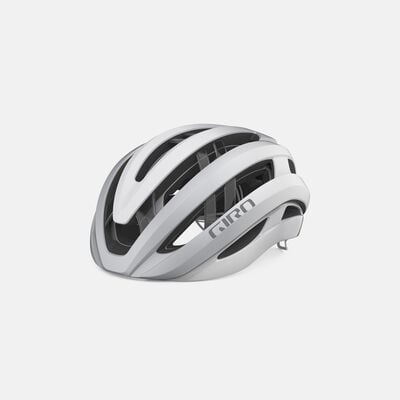
Aries Spherical Helmet
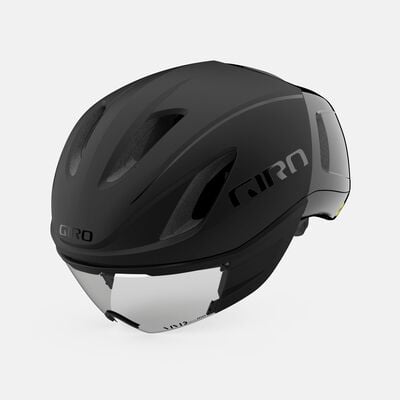
Vanquish Mips Helmet

Exploring Tour de France Helmets: A Comprehensive Guide
As a professional copywriting journalist, I have witnessed the increasing popularity of cycling and the sport’s most renowned event, the Tour de France. The race brings together the world’s top cycling athletes and showcases their skills on one of the most challenging courses. With such high-speed races, the safety of the athletes is of utmost importance, and Tour de France helmets play a pivotal role in ensuring their protection.
In this comprehensive guide, I will take a closer look at Tour de France helmets , their history, design advancements, and reviews. Whether you’re a professional cyclist or a cycling enthusiast, this guide will equip you with the necessary knowledge to make informed decisions when choosing the best Tour de France helmet for your needs.
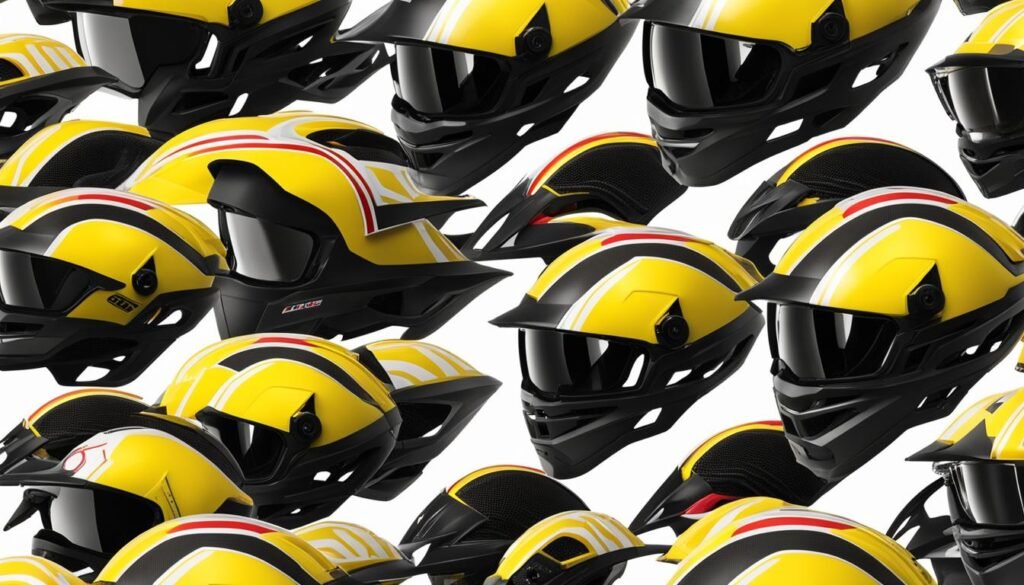
Key Takeaways:
The importance of lightweight helmets, the advantages of aerodynamic design, the future of tour de france helmet technology, kask protone helmet, bell z20 aero mips helmet, giro aether mips helmet, make informed decisions, analyze top-rated options, benefit from essential aspects, are tour de france helmets different from regular cycling helmets, what are some key features to look for in tour de france helmets, can i use a tour de france helmet for recreational cycling, how do i determine the right size for a tour de france helmet, how often should i replace my tour de france helmet, can i customize the design of my tour de france helmet, are tour de france helmets compatible with all cycling accessories, are tour de france helmets suitable for all weather conditions, where can i purchase tour de france helmets, related posts:.
- Tour de France helmets play a crucial role in ensuring the safety of the athletes during the race.
- This guide will provide an in-depth exploration of Tour de France helmets, their history, design advancements, and reviews.
- Whether you’re a professional cyclist or a cycling enthusiast, this guide will give you the necessary knowledge to choose the best Tour de France helmet for your needs.
- Stay tuned for insights into advancements in Tour de France helmet technology and a closer look at the top-rated Tour de France helmets available in the market.
Advancements in Tour de France Helmet Technology
When it comes to Tour de France helmets, performance is everything. To gain an edge over their competitors, professional cyclists need helmets that are both lightweight and aerodynamic, providing superior speed and comfort on the racecourse.
In recent years, lightweight materials such as carbon fiber have become extremely popular in the construction of Tour de France helmets. These helmets are designed to be as light as possible, allowing riders to move faster and expend less energy during the race.
But how much of a difference can a few ounces really make? According to a study by the Journal of Sports Sciences, reducing the weight of a rider’s helmet by just 10% can result in a 2% increase in overall cycling performance. For professional cyclists, where every second counts, this can be the difference between winning and losing.
Another key factor in Tour de France helmet technology is aerodynamics. Aerodynamic helmets are designed to reduce wind resistance, allowing cyclists to cut through the air with greater ease. This, in turn, can significantly improve a rider’s speed and performance on the course.
There are many features that make a helmet aerodynamic, such as streamlined shapes and ventilation systems that reduce drag. Some manufacturers even use wind tunnel testing to optimize their helmet designs and ensure maximum performance on the racecourse.
As technology continues to evolve, we can expect to see even more innovations in Tour de France helmet design. From improved materials to advanced ventilation systems, these helmets will continue to push the limits of what’s possible on the racecourse.
- Smart helmets that provide real-time feedback on a rider’s performance and health are already in development.
- The use of 3D printing technology is enabling manufacturers to create customized helmets that fit each rider’s head perfectly.
- Some manufacturers are even experimenting with built-in cameras and communication systems, allowing riders to stay connected and record their experiences on the racecourse.
Overall, the future of Tour de France helmet technology is bright, and we can expect to see even more exciting advancements in the years to come.
Top-Rated Tour de France Helmets: A Closer Look
When it comes to professional Tour de France cycling, choosing the right helmet is crucial. The best Tour de France helmets offer a combination of protection, comfort, and performance-enhancing features. Here are some of the top-rated helmets that professional cyclists trust, and what sets them apart from the rest.
The Kask Protone Helmet is a popular choice among professional cyclists, and for good reason. With its aerodynamic design and lightweight construction, this helmet can help cyclists shave precious seconds off their time. The helmet features a multi-layer construction, providing excellent protection in the event of an impact. It also has a comfortable fit, with soft padding that molds to the rider’s head, ensuring a secure and snug fit.
The Bell Z20 Aero MIPS Helmet is a helmet designed to optimize aerodynamics, while still offering superior protection. Its unique design features a dimpled surface and a special padded interior to reduce wind resistance and enhance ventilation, ensuring a cool and comfortable ride. The helmet also incorporates MIPS technology, providing an extra level of protection against rotational forces in the event of a crash.
The Giro Aether MIPS Helmet is a helmet designed specifically for the Tour de France, with input from professional cyclists. Its aerodynamic design and MIPS technology provide excellent protection and performance enhancement. The helmet has a unique construction, with a dual-density foam liner that provides extra protection in high-impact areas. It also features a comfortable Roc Loc Air fit system, allowing for a customizable fit that can be adjusted on the go.
- Kask Protone Helmet: Lightweight construction, Multi-layer protection, Comfortable fit
- Bell Z20 Aero MIPS Helmet: Unique aerodynamic design, MIPS technology, Ventilation system
- Giro Aether MIPS Helmet: Designed specifically for Tour de France, Dual-density foam liner, Roc Loc Air fit system
Choosing the best Tour de France helmet is a personal decision, and each cyclist has their own preferences and requirements. However, these top-rated helmets have proven themselves on the racecourse, offering superior protection, comfort, and performance-enhancing features. As a professional copywriting journalist, it’s my recommendation that the Kask Protone Helmet, Bell Z20 Aero MIPS Helmet, and Giro Aether MIPS Helmet are the top options for professional Tour de France cyclists.
As a professional copywriting journalist, I hope this comprehensive guide has provided you with valuable insights into Tour de France helmets. By exploring their history, design advancements, and reviews, you now have a better understanding of what to look for when choosing the perfect helmet.
Remember, when choosing a Tour de France helmet, you must consider the key features that make them stand out. From lightweight materials to aerodynamic designs, every aspect of the helmet can impact your performance and safety. Therefore, it is essential to make informed decisions when selecting one.
If you’re a professional cyclist participating in the race, analyzing the top-rated Tour de France helmets in detail is crucial. These helmets are tailored to meet the needs of professionals like you, providing optimal safety and performance. So, make sure to scrutinize them closely before making your final choice.
With this knowledge, you can benefit from the essential aspects of Tour de France helmets. Whether you’re a cycling enthusiast or a professional, this guide has covered everything you need to know to make an informed decision about a helmet. So, choose wisely, and get ready to take on Tour de France with confidence!
Yes, Tour de France helmets are specifically designed for professional racing and have advanced features that optimize performance and safety on the racecourse.
Lightweight construction, aerodynamic design, superior ventilation, and a secure fit are some important features to consider when choosing a Tour de France helmet.
While Tour de France helmets are designed for professional racing, they can also be used for recreational cycling. However, keep in mind that they may have a more aggressive fit and may not prioritize comfort for longer rides.
To ensure a proper fit, measure the circumference of your head just above your eyebrows. Refer to the manufacturer’s sizing chart to find the corresponding helmet size.
It is recommended to replace your Tour de France helmet every 3 to 5 years, or immediately if it has been involved in a significant impact or crash.
Some Tour de France helmet models offer customization options, allowing you to personalize the design with your team colors, logos, or other graphics. Check with the manufacturer for available customization features.
Tour de France helmets typically have universal compatibility with various cycling accessories such as sunglasses, helmet covers, and chin straps. However, it is still advisable to check the helmet’s specifications for specific compatibility details.
Most Tour de France helmets are designed to offer adequate ventilation for hot weather conditions. However, some models may also include removable or adjustable vent covers to provide better insulation in cold or wet conditions.
Tour de France helmets can be purchased from reputable cycling retailers, online stores, or directly from the manufacturers’ websites. Ensure that you buy from authorized sellers to guarantee the authenticity and quality of the helmet.
Leave a Comment Cancel Reply
Your email address will not be published. Required fields are marked *
Save my name, email, and website in this browser for the next time I comment.

IMAGES
VIDEO
COMMENTS
Ekoi is the most commonly found helmet manufacturer in this year's Tour de France, supporting no less than four teams representing the French brand. ... Giro is a common sight in any Tour de ...
In 2023, there will be 16 bike helmet brands present at the Tour de France. Ekoi (4 teams) and Specialized (3 teams) helmets are the most represented, followed by Abus (2 teams). The notable helmet brands absent are Bell and Giro. One of the most visible gears at Tour de France 🇫🇷 is the riders' helmets besides their bikes 🚴 and ...
Download the app . Ahead of the 2023 Tour de France, POC and Giro respectively have released a pair of special-edition helmets. The two helmets aim to allow mere mortals among us to emulate our favorite riders on Team EF Education First-EasyPost or Team Canyon-SRAM Racing with what might just be the two most distinctive kits in the men's and ...
A yellow helmet is worn by every rider of the team that is leading the Team's Classification (the team that has the lowest cumulative time by adding the times of the three best riders of each team per stage). For 2022, there 16 helmet brands at the Tour de France. There are three teams each wearing Ekoi and Specialized, helmets followed by ...
Visma-Lease a Bike is the most dominant team in cycling at the moment, having won the Tour de France, Giro d'Italia, and Vuelta a España in 2023. The squad employs an army of coaches ...
Based in Ohio, Zach is now slowly introducing a new generation to cycling and still trying to figure out how to fit the most rides into a busy schedule as a new dad. Giro's potentially new aero helmet has been spotted again, this time at the Tour de France with Team BikeExchange.
Giro brings a new aero road helmet to the Tour de France to aid Katusha-Alpecin and BMC racing in the sprint stages. 2-FOR-1 GA TICKETS WITH OUTSIDE+ ... BMC and Katusha-Alpecin are both wearing new helmets from Giro at this year's Tour de France. The new lid will replace Giro's Air Attack helmet.
Custom Giro Aether helmets for the Tour de France. Giro has a dedicated aero helmet, the Vanquish, which teams have been racing in this year. The Giro Aether Spherical is the all-around road helmet that builds the MIPS safety system into the helmet itself, instead of using a thin plastic insert that way other MIPS helmets do.
BMC Racing's Rohan Dennis is wearing Giro's Synthe MIPS helmet at this year's Tour de France. (Image: Provided) As top-of-the-line bike helmets go, Giro Sport Design's new Synthe MIPS ...
Add the Helios's $50 lower price point, and it stacks up well against Giro's best road helmet. ... The Fastest Helmets of The Tour de France. REI Offers the Smith Forefront Helmet for 50% Off .
Here is your definitive guide to the helmets currently in use at the Tour de France. Chris Auld. Deceuninck—Quick-Step. Specialized S-Works Evade. $250 | Specialized. Buy Now. Getty Images ...
Price: $260. Weight: 362g (medium) View Gallery. Giro's new $260 Manifest mountain bike helmet is the brand's most expensive half-shell to date. At a full $100 more than the excellent Montaro ...
The Ironman, the Tour de France, Olympic track racing... the Air Attack is a helmet seeing adoption at the top levels of the sport. We caught up with Giro's R&D team for some insight on the design.
Live For This: CANYON//SRAM Racing. The Biggest Stage: CANYON//SRAM Racing Prepares for Le Tour de Frances Femmes avec Zwift. Words: Peter Nicholson. Video: Brian Vernor. Photos: Thomas Mayheux, Beth Duryea, Peter Nicholson. There just is nothing like it. The Tour de France stands apart from all other races in cycling with 100 years of history ...
After outfitting sponsored teams with new time trial helmets last week, Giro used the first mountain stages of this year's Tour to unveil a new road helmet as well. Unlike the TT helmet, which has yet to be named, priced, or slated for release to the public, the new Giro Prolight is already in the pipeline for retailers this coming spring. Giro Prolight - less is more
This was absolutely the making of Giro as a brand. LeMond wins 1989 Tour de France - Giro had a hand in one of the most iconic moments in Tour de France history. The final time trial of the 1989 Tour is the stuff of legend, with Greg LeMond going full aero to snatch the yellow jersey from Laurent Fignon by eight seconds.
Originally worn by Greg Lemond at the 1989 Tour de France, the Giro Aerohead has a legacy as the first popular aero helmet in cycling. After almost a 30-year hiatus, Giro welcomes two new iterations of the Aerohead: the Aerohead Ultimate MIPS and Aerohead MIPS. While the two models are different, they do share multiple features, including ...
Giro . Giro tour de france helmets . Giro is another popular brand that has been present in the Tour de France for many years. Their helmets are a well-known brand among the pro peloton, with a history dating back to pre-2000. This year, three teams in the 2022 Tour de France will be wearing Giro helmets, including Groupama-FDJ.
The first Giro Sport Design was called the Advantage. It helped riders cheat the wind by blurring the lines between equipment and bodies. In 1986, Giro helped a young American win the Tour de France by a mere 8 seconds in the first Aerohead. The quest to engineer speed continues with Aerohead II and our partners, Team Visma | Lease a Bike.
Key Takeaways: Tour de France helmets play a crucial role in ensuring the safety of the athletes during the race. This guide will provide an in-depth exploration of Tour de France helmets, their history, design advancements, and reviews. Whether you're a professional cyclist or a cycling enthusiast, this guide will give you the necessary ...